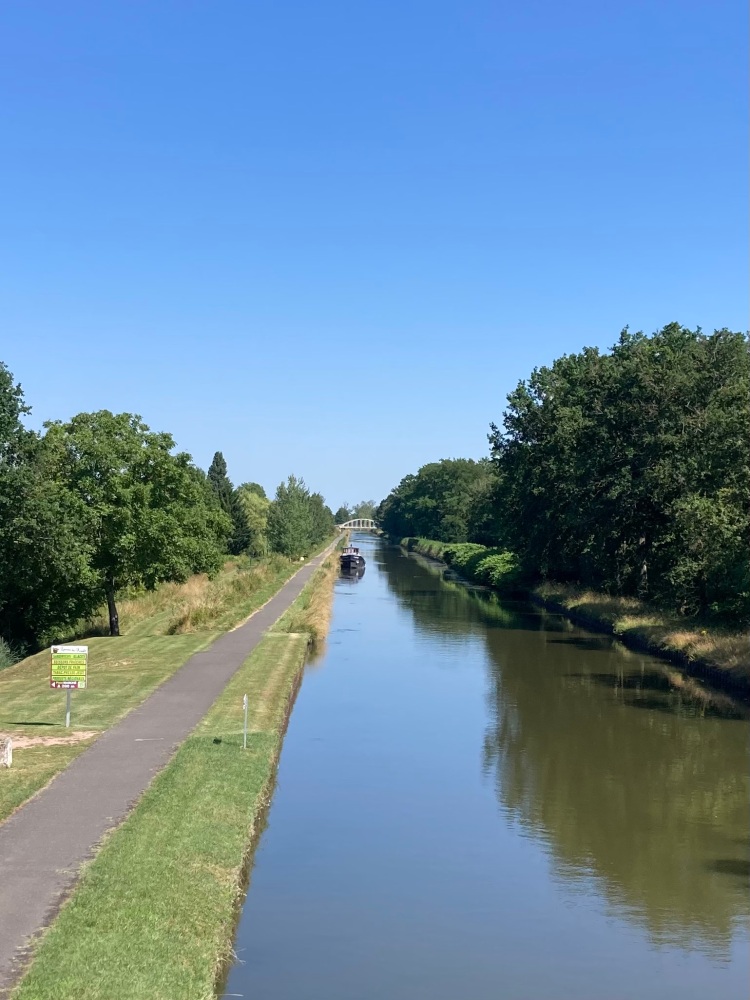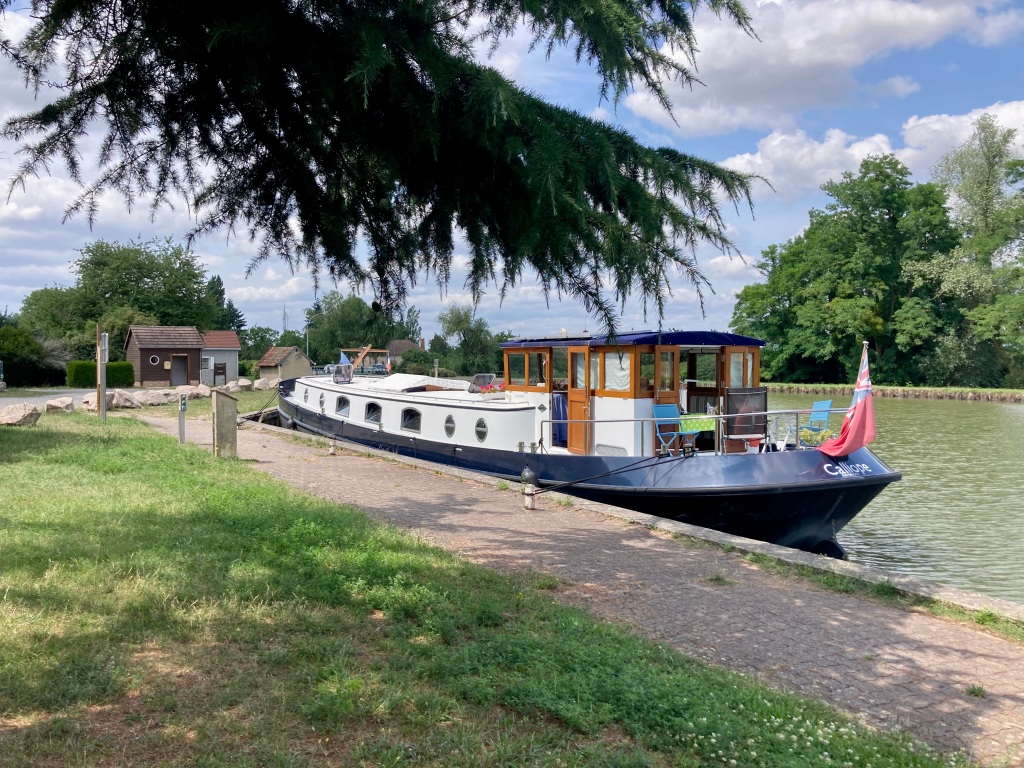South to North, the first 93 kilometres
22 June – 1st July 2023
We had been travelling on the Canal du Centre for 2 weeks, retracing our steps (or should I say wake?) from 2016. And for the first 4 kms of the Lateral à la Loire we would be doing the same thing; after Décize it would be a new waterway with new vistas. Latèral should have the accent over the ‘e’ everywhere, but WordPress kept reverting to a normal ‘e’; apologies.
As our barge left the Canal du Centre at Digoin and moved seamlessly onto the Canal Lateral á la Loire we passed over the Loire on an aqueduct. It was one of the first major aqueducts to be built in France (1834-1838). It is 243m in length, sits atop 9 pillars and 11 arches and was designed by the French engineer Pierre-Alexandre-Adophe Jullien.
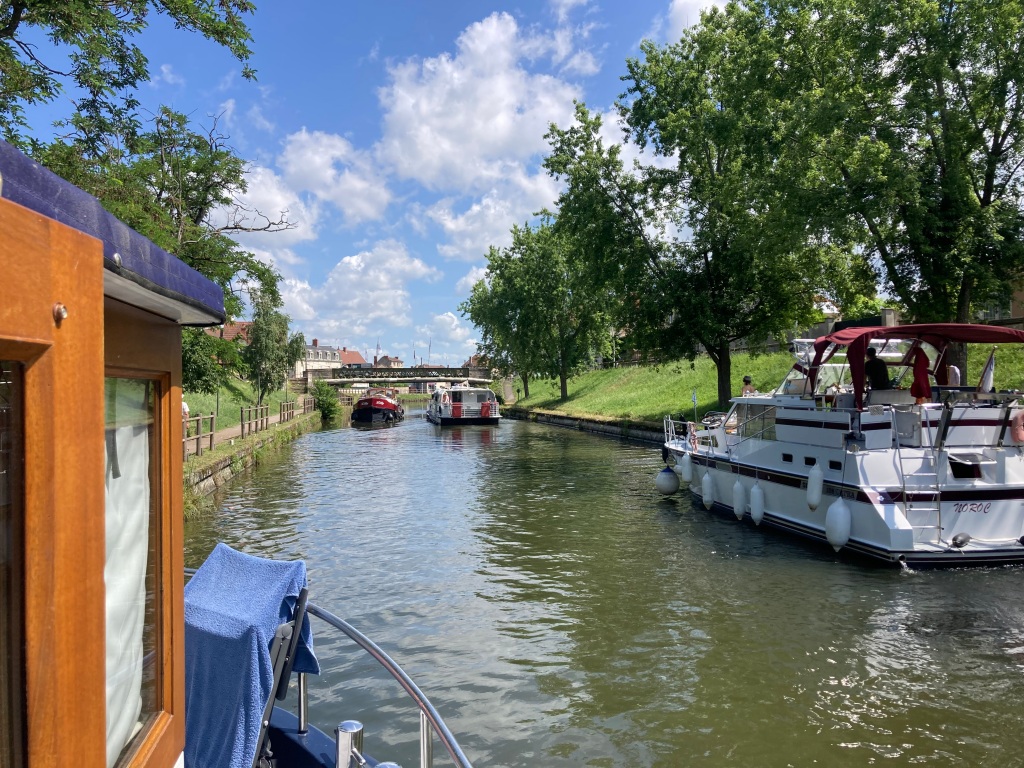
We had been waiting about an hour and a half to cross; there is a lock at the other end and we arrived just as a passenger boat of school children was coming up the lock, and across the aqueduct, which took us directly into éclusier lunch break!

Not a problem. We had a nice place to wait and we had our lunch on board. After lunch we cruised gently over the Loire, into the lock, and dropped down onto the Lateral à la Loire.
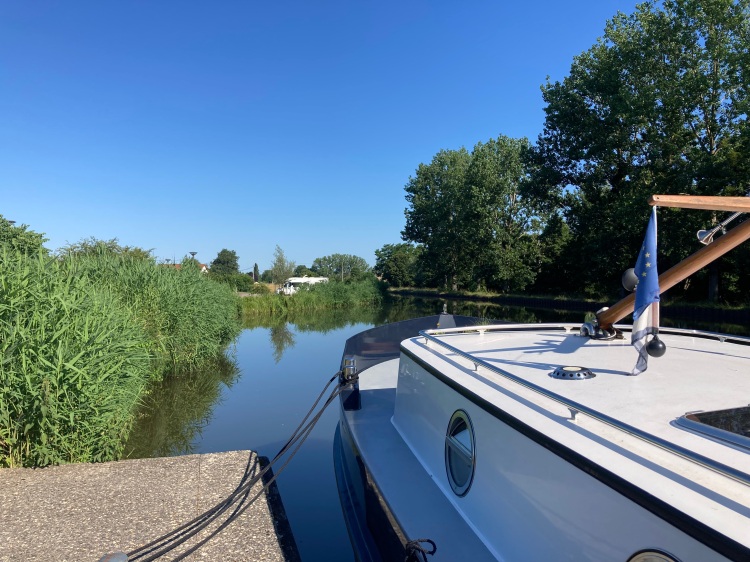
Luckily the hold up did not spoil a major plan.
This day’s travel was going to be short anyway, even by our standards!
Just 8 kilometres to Molinet, a fairly basic but pleasant modern quay alongside a camper van park.
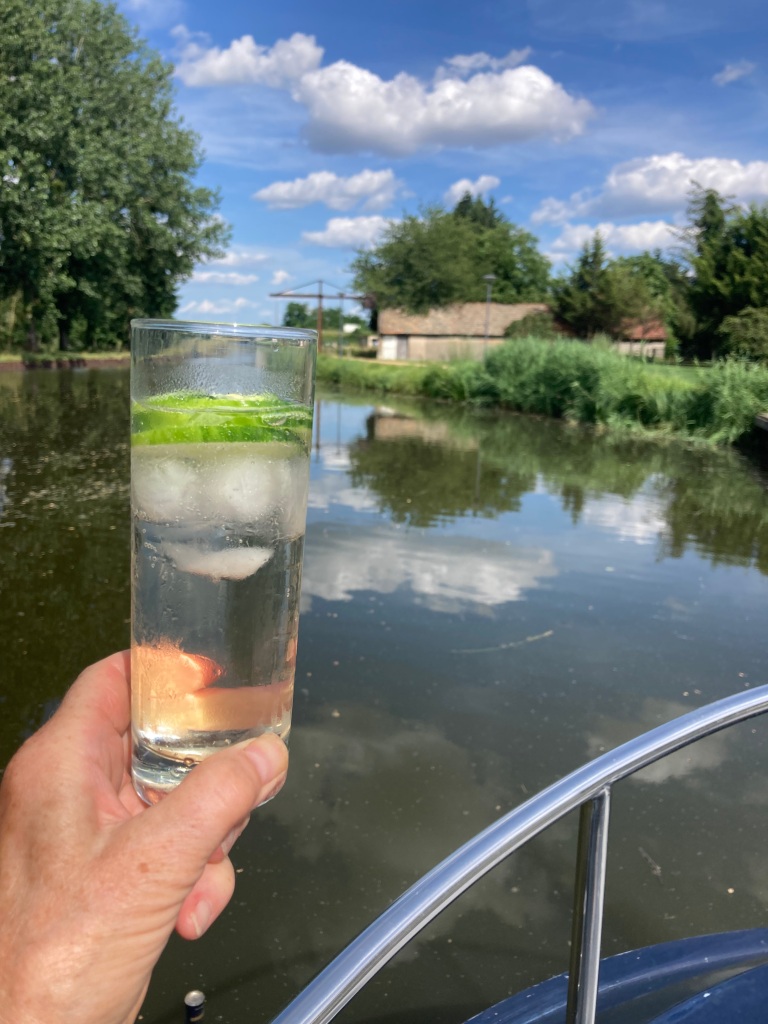
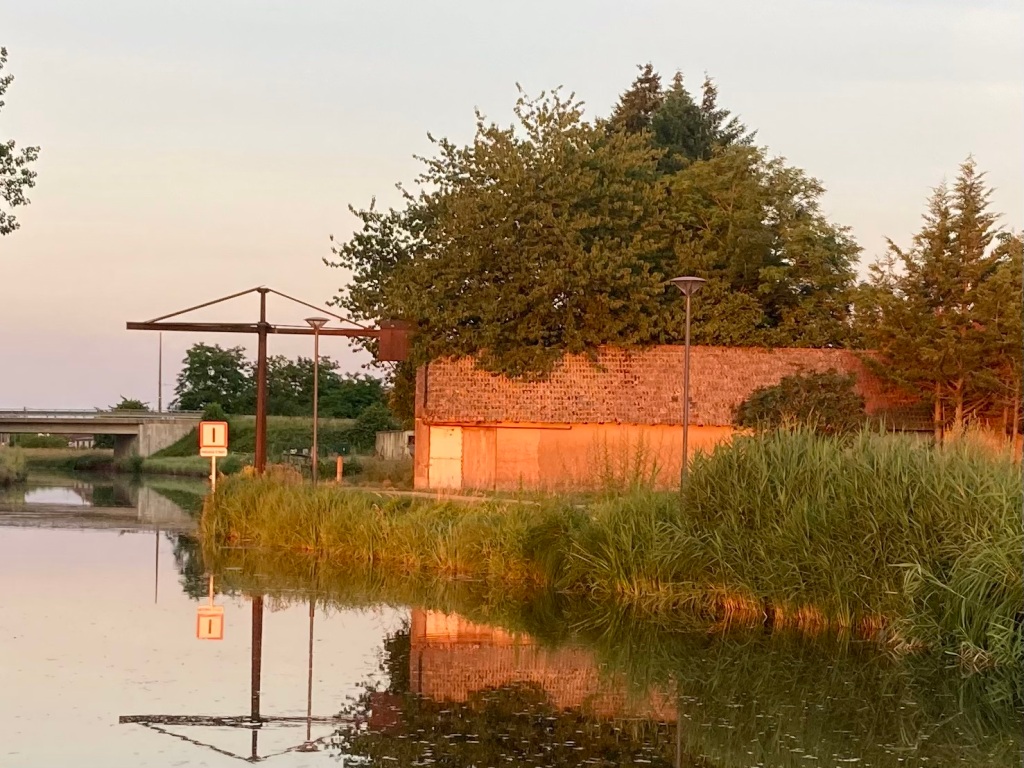

Molinet was quiet, and even picturesque as evening gradually arrived – it was only two days after June 21st , the longest day. (The photo on the left has amused some people who see a smiley face in the ice and cucumber of my glass).
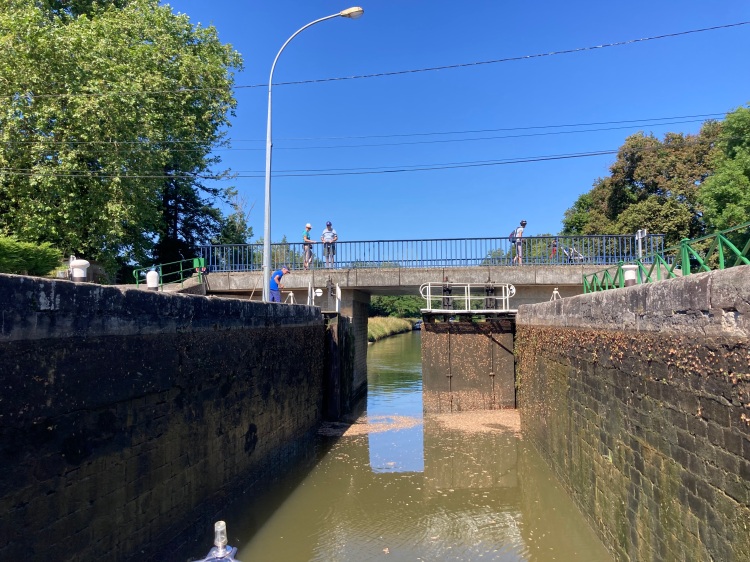
The next day was not much longer in terms of kilometres – just 10km! We had a new interest at the locks now because they are still mainly operated manually by an éclusier* (lock keeper) – almost always clothed in VNF blue and here at work opening the doors of the lock.
- I find myself using the French words for some of the things we encounter every day; apologies if this seems pretentious. That is not the intention. It is more about helping to inform others who are considering time on the waters of France. 😊
Whenever we can we like to help the éclusiers with the lock doors. It very much depends on whether we can get off the barge in time to help, and back on again afterwards!
Captain Stu aims for us to moor up on the opposite side to the éclusier, get a rope round a bollard and jump off to close one of the doors.

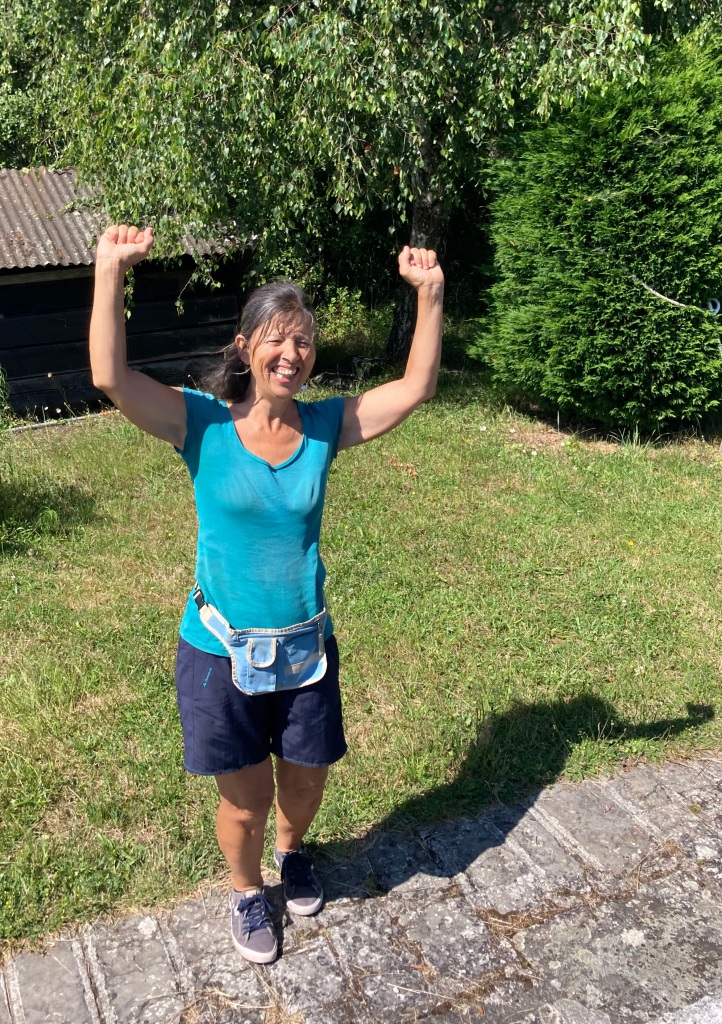
On this particular day, at our last lock of the day, we discovered that our éclusier was retiring that day! The locks along here are being automated and many of the éclusiers will be made redundant, so a well timed retirement for her.
She lives on a barge moored near the lock and is looking forward to cruising now she has the time.
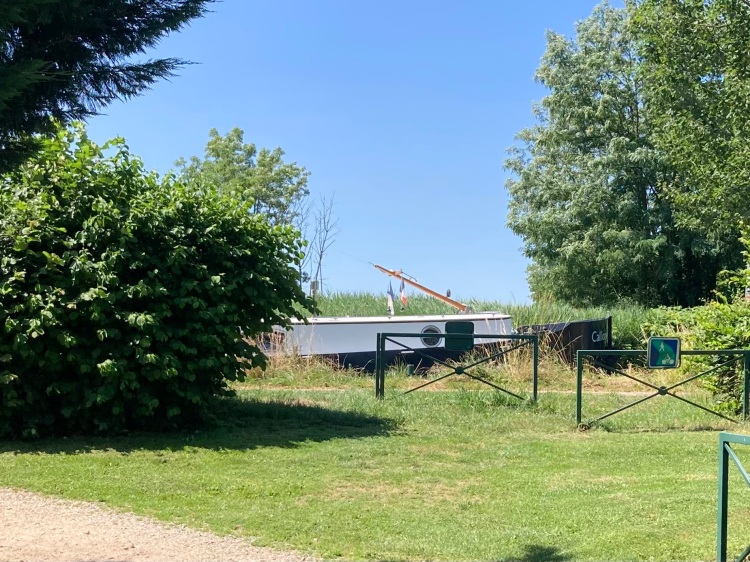
We were looking for a tiny mooring next to a village called Pierrefitte-sur-Loire. It was not easy to spot until just as we reached it, next to a path into the village; just right.
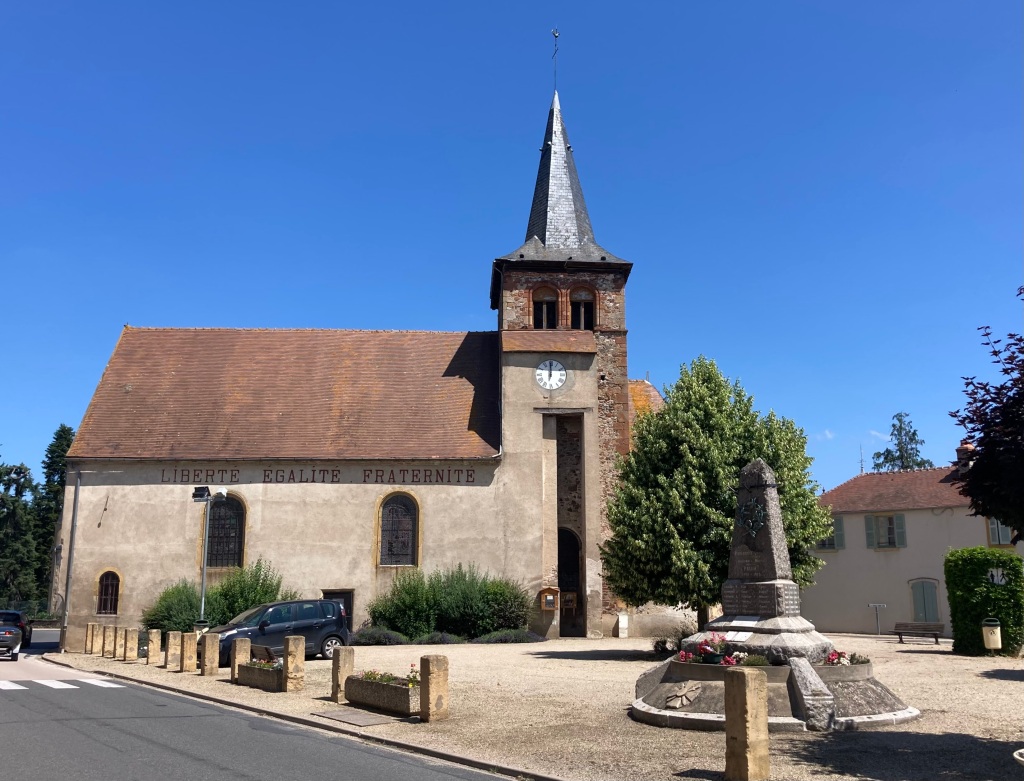

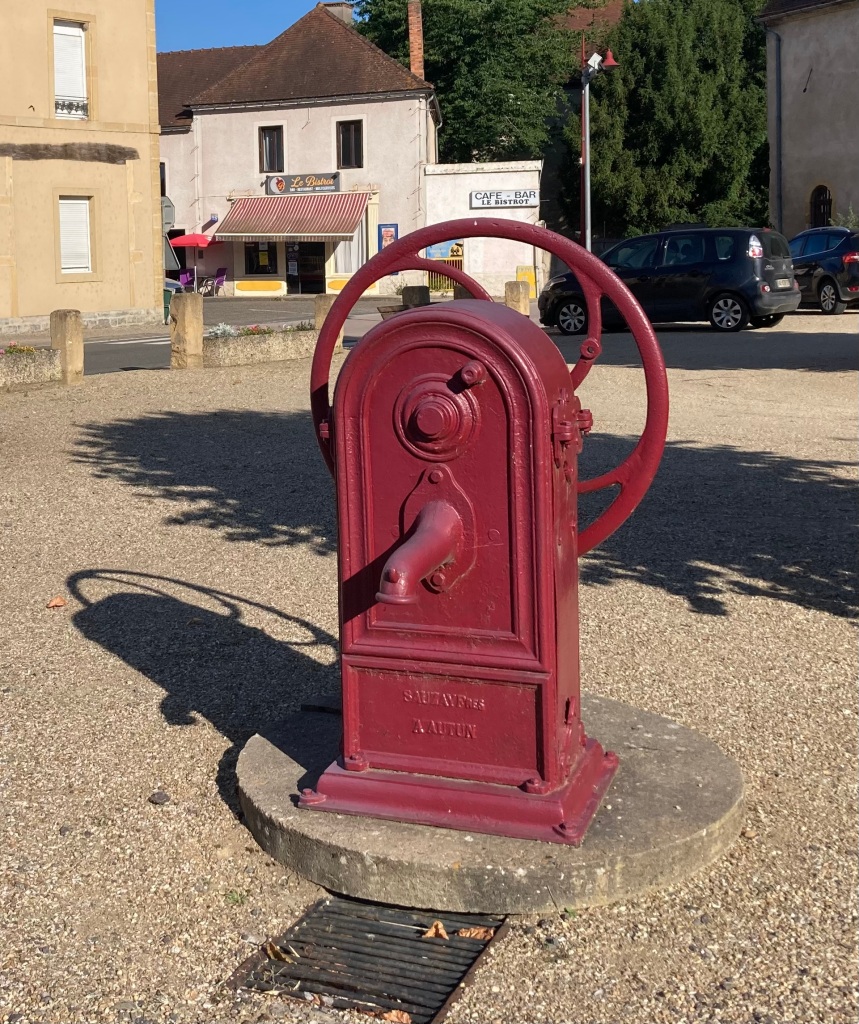
There was time to have a quick look at Pierrefitte while buying bread from the bar/cafe behind the old pump in the photo on the right. I was surprised to find quite a grand house in the centre, and an interesting church.
Pierrefitte is no longer on the Loire. The river’s meanderings have taken it a couple of kilometers or more from many of the villages bearing its name.
Another walk later included going up to the bridge and looking back to our quiet little mooring – our favourites, as you might have gathered! The other side of the bridge is quite a large basin that also offers mooring. It looked perfectly pleasant and suits many other boats.

Next morning dawned fine and cool; I thought it an ideal opportunity to start cleaning off some of the dust and grime we had picked up in the recent towns.
This is me feeling better and better on the broken ankle of 10 weeks previously and almost able to get back to full crew duties!
6 kilometres after Pierrefitte we did get close to the Loire; it meandered back towards the canal just as we went round an almost right angle curve, if such a think is geometrically possible.
You can just see the river below us.

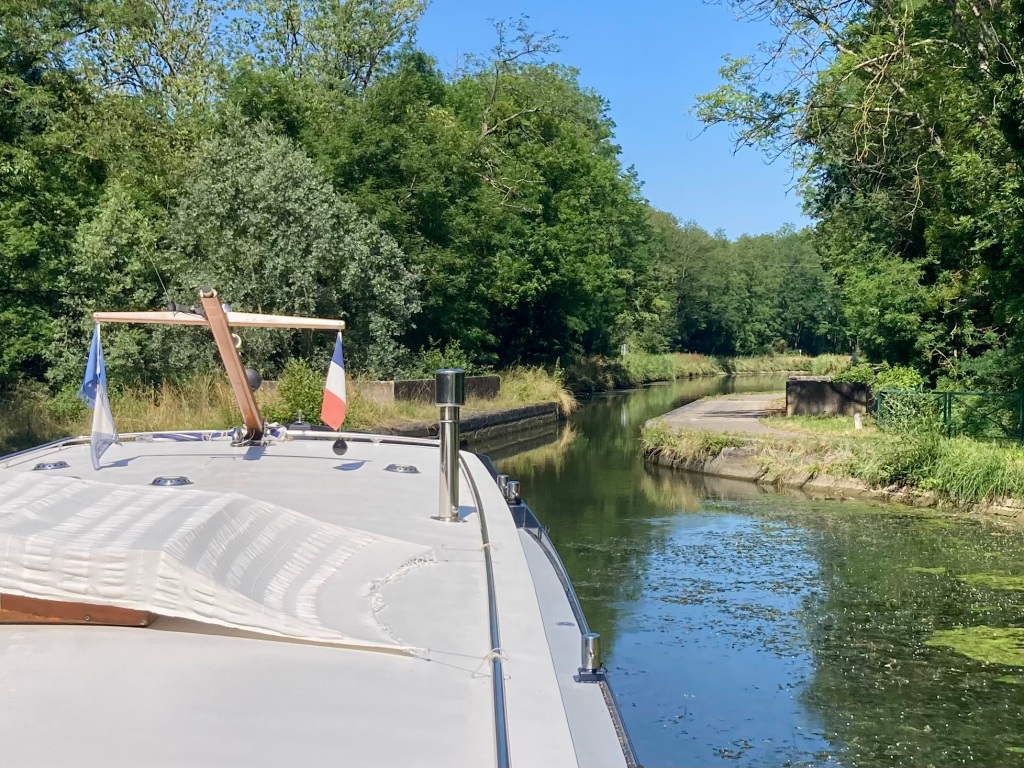

Going round that curve took Calliope through some narrow sections that required good concentration from the Captain; as usual he passed through smoothly while crew watched on admiringly.
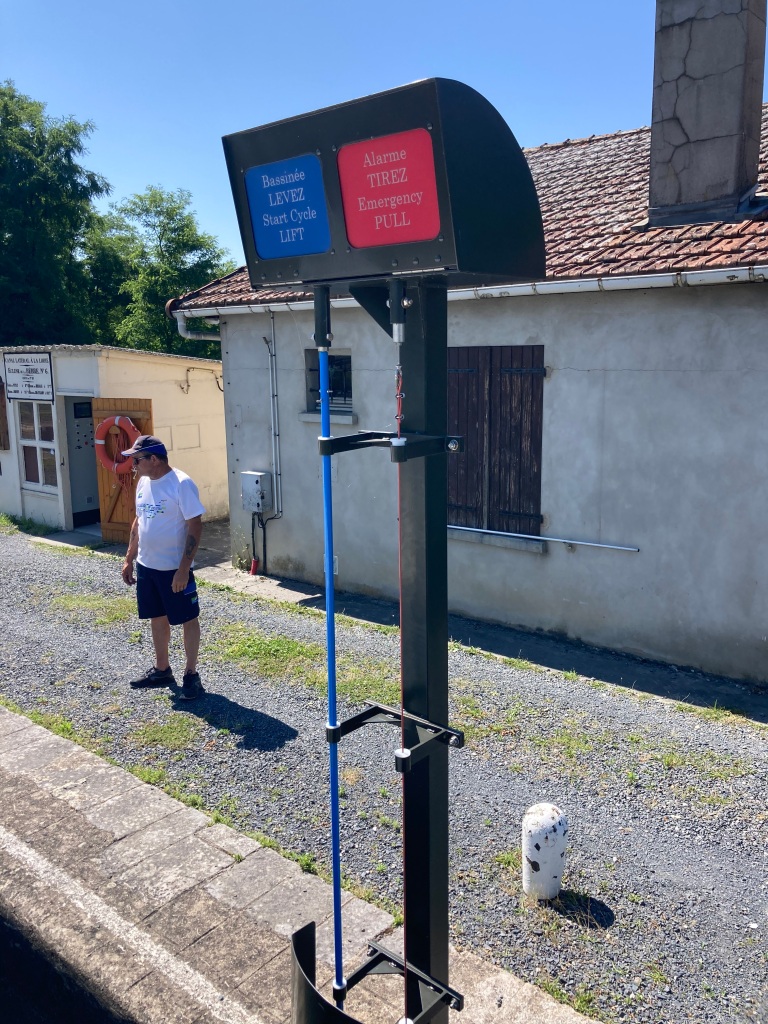
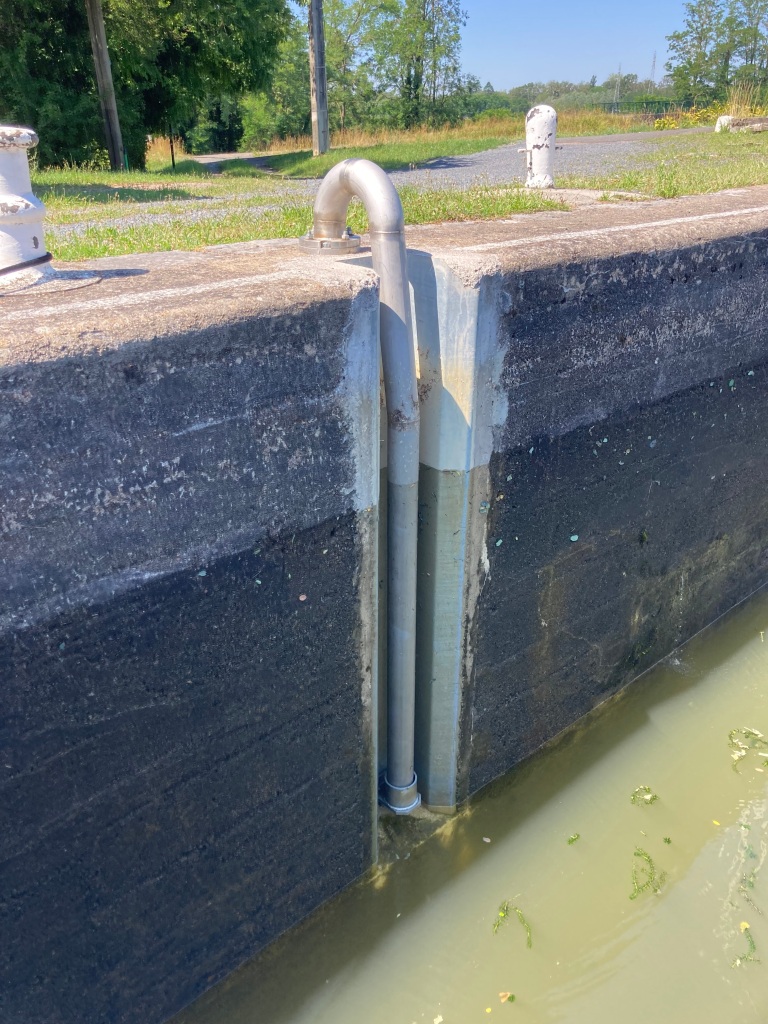
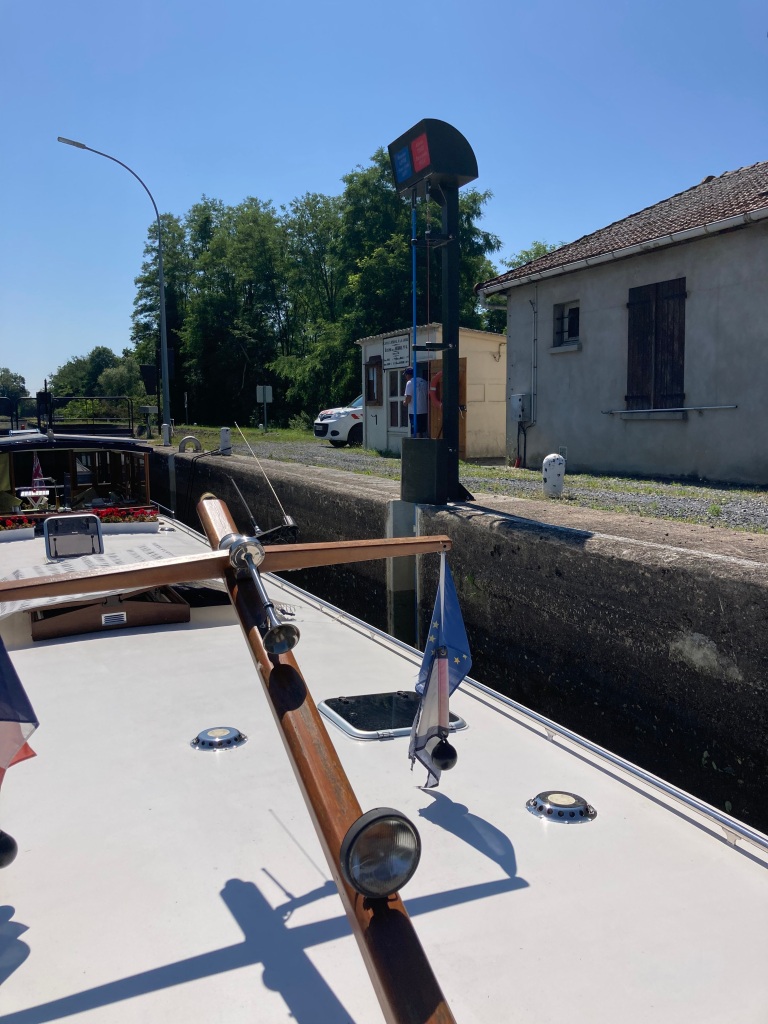
We came to a part of the canal near Dompierre which was definitely in the process of being modernised. The blue operating levers that we were used to seeing on the Canal du Centre, and other canals, were there waiting to be used and very sturdy metal ‘sliding poles’, to make it easier when rising in a lock, had been installed.
The écluisier told us that the whole of the canal was being gradually moved to batellier (boater) operated, dispensing with the services of the lock keeper except when things go wrong. He might be made redundant, or maybe would get one of the new jobs with a van, moving from one problem lock to another. We hoped he would be ok.
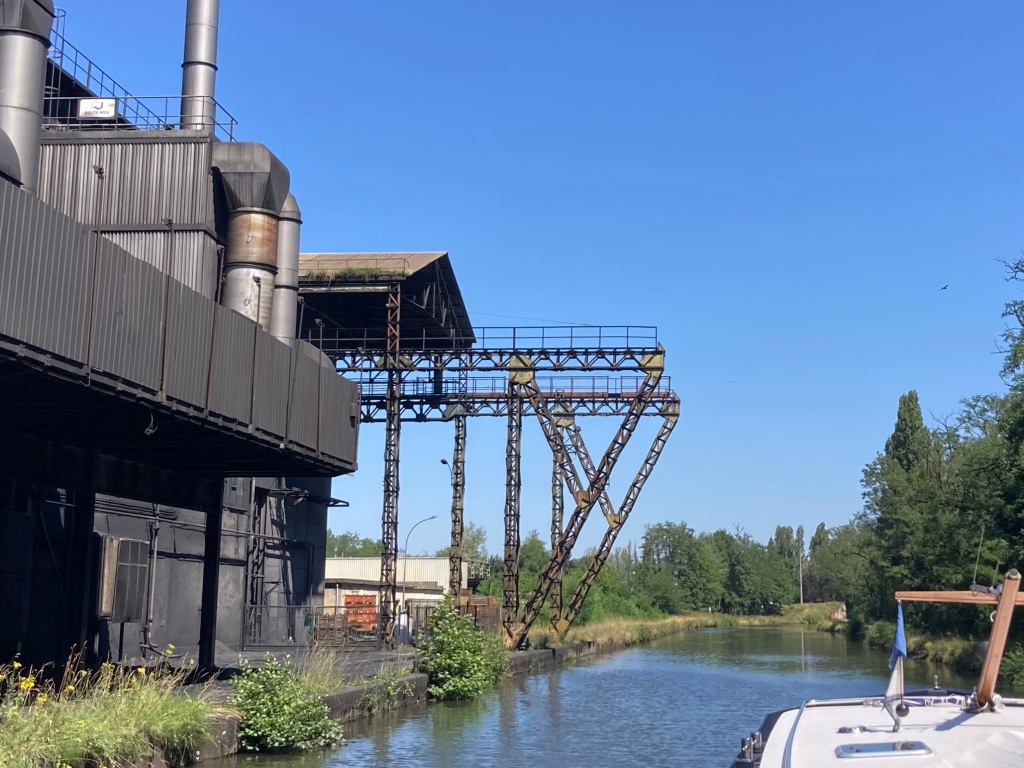

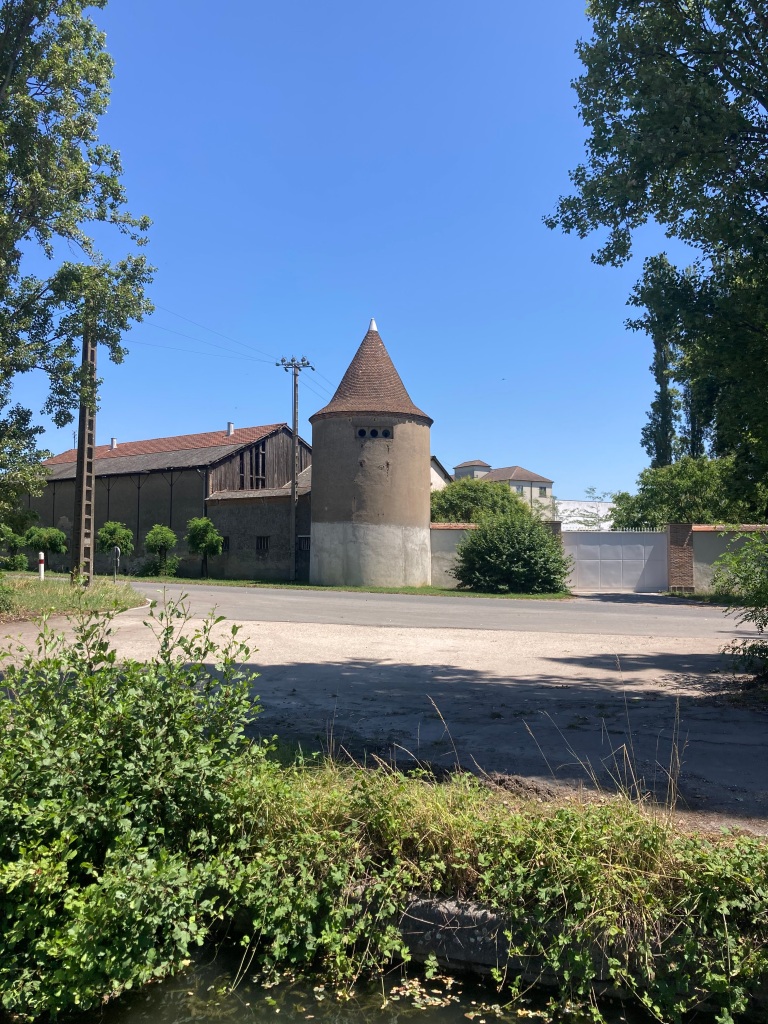
It was by then lunchtime, and the same éclusier kindly recommended a mooring for the ‘heure de déjeuner’. It had three distinct characteristics. It was opposite quite a major factory, churning out cement we think; it was pleasantly in the shade on a hot day; and it was alongside a big old abbey. I caught sight of an entrance to the latter as we left.

That afternoon we reached Beaulon, quite a large and popular basin with both boaters and camper vans – but surprisingly peaceful nonetheless. We enjoyed the evening shade on what had been quite a warm day – maybe 31C.
We moored the boat to take advantage of the free shore power electricity. Our solar panels make us almost independent of ‘the grid, but we prefer to have shore power connected if we decide to use the AC in the cabin to cool down the room before bedtime.

It’s was such a lovely evening on the back deck there at Beaulon; totally relaxing.
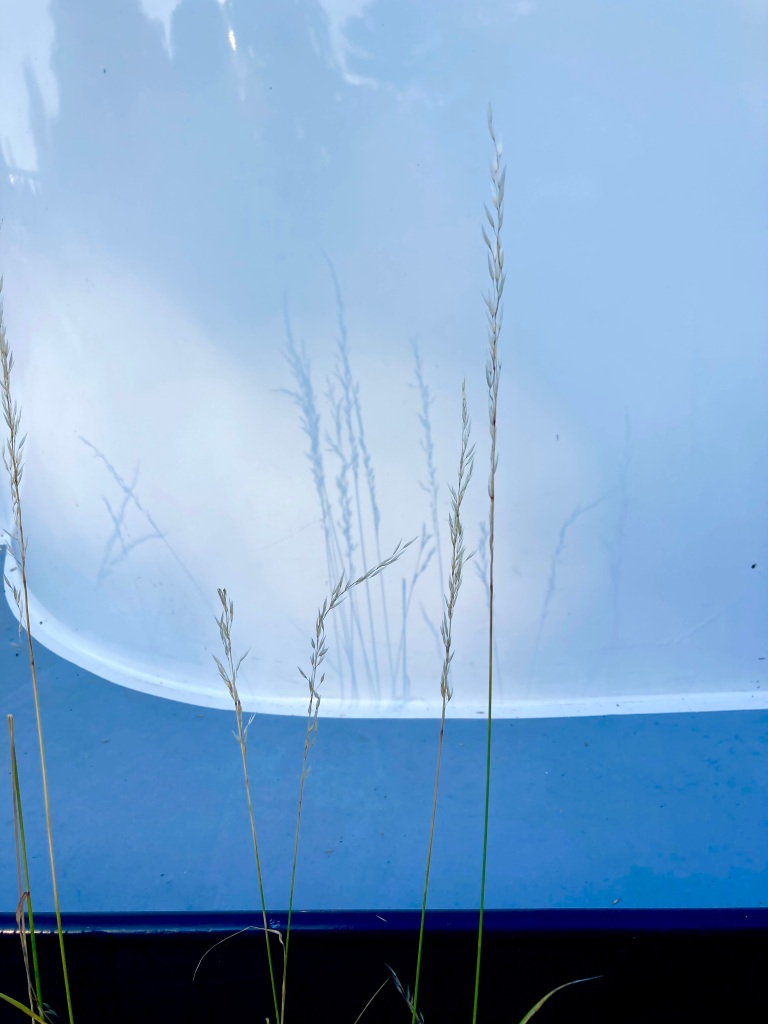
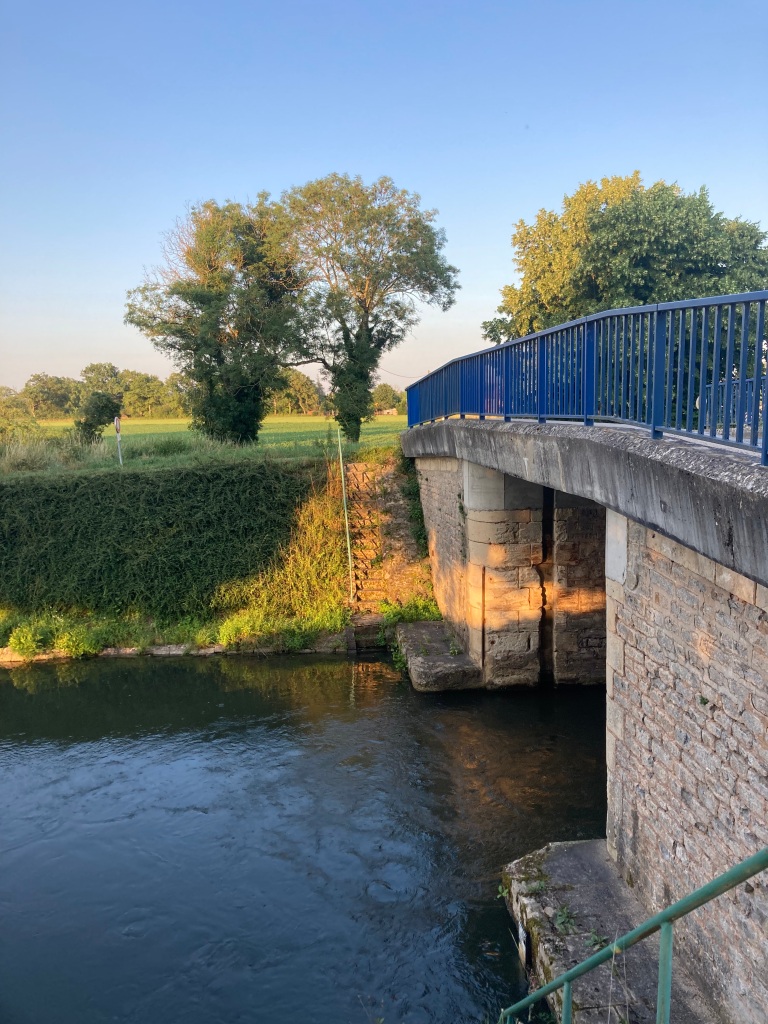
The light played around on the boats and the surroundings; shadows in some places, warm sunset light in others. And all in such tranquility, apart from the birds singing their bedtime songs.
Next morning before we left I could not resist one more walk round the basin, up to the bridge, and a final look back at Calliope moored up with ‘friends’. We could completely understand why people speak highly of this place.
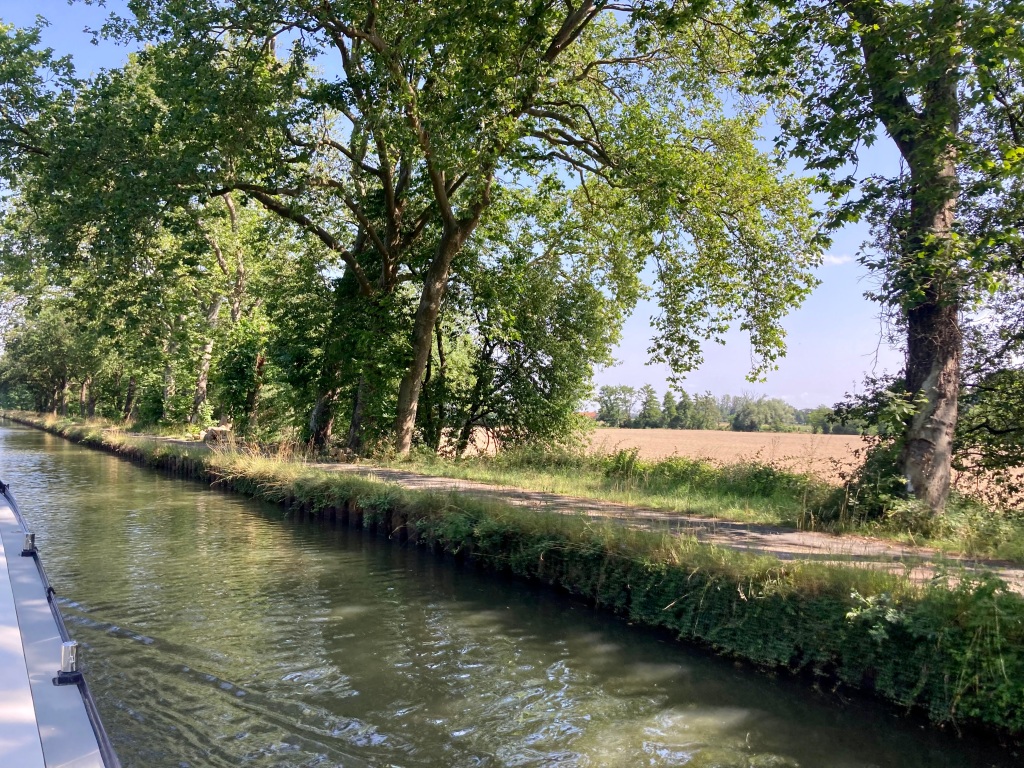
Then we were off down the canal, looking for our next adventure and next mooring. The countryside was a palette of agricultural colours, heading for harvest.
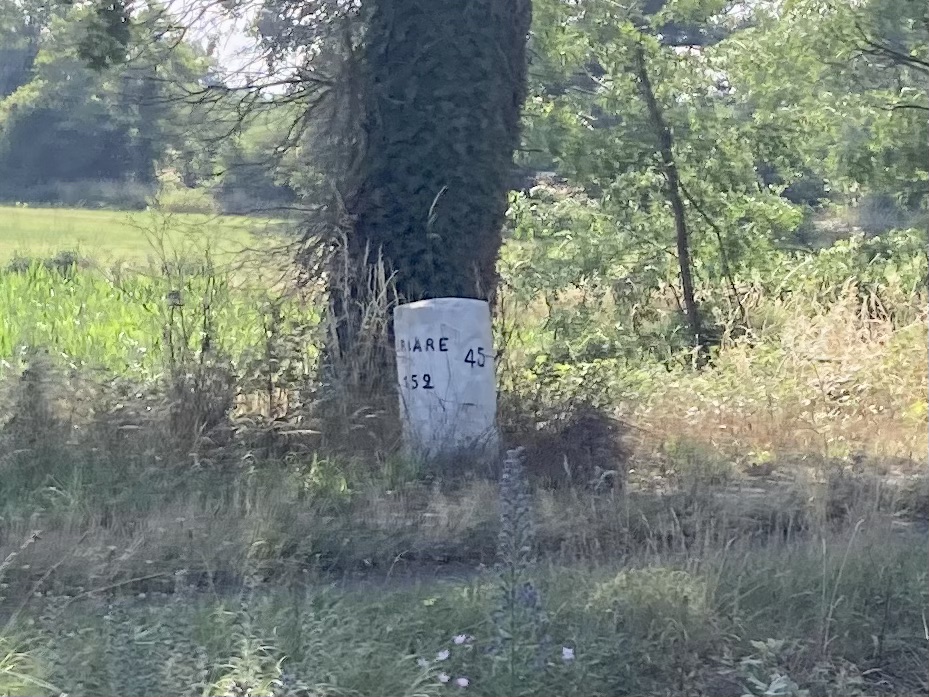

Different canals have different ‘furniture’. The PK (kilometre) markers along this canal are white painted stone, a bit like English milestones. Usually they just show the PK number on the side facoing the water, but this one showed on one side the distance we still had to go to Briare (152 kms) and on the other side the distance we had come from Digoin (42 kms).
Now and then along the canal we saw similar kilometre markers, marking our progress.
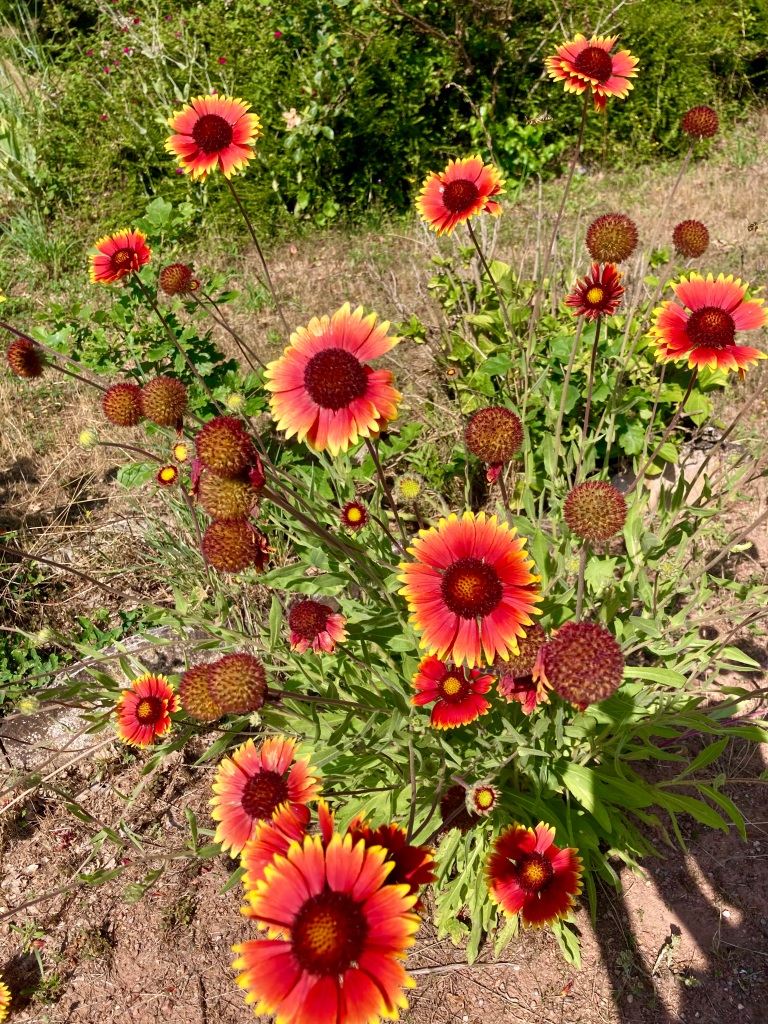
At one of the locks that day these flowers were such a glorious golden orange cacophony of colours that I jumped off the boat to take a photo – they so brightened up the area which was otherwise a little sad.
I guess some éclusier in the past planted them and they have continued unabated, and untroubled by the changes in écluse operation
At the next locks as we dropped down my view became just of this one cloud in the blue blue sky – a contrast to the golden flowers from before.
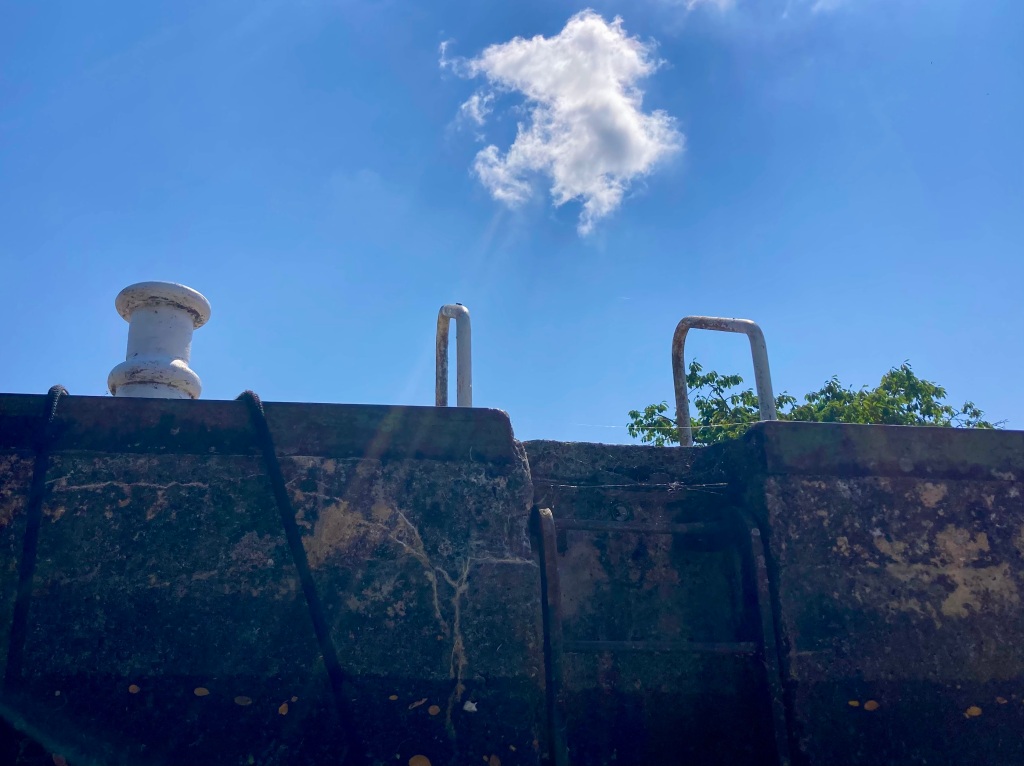
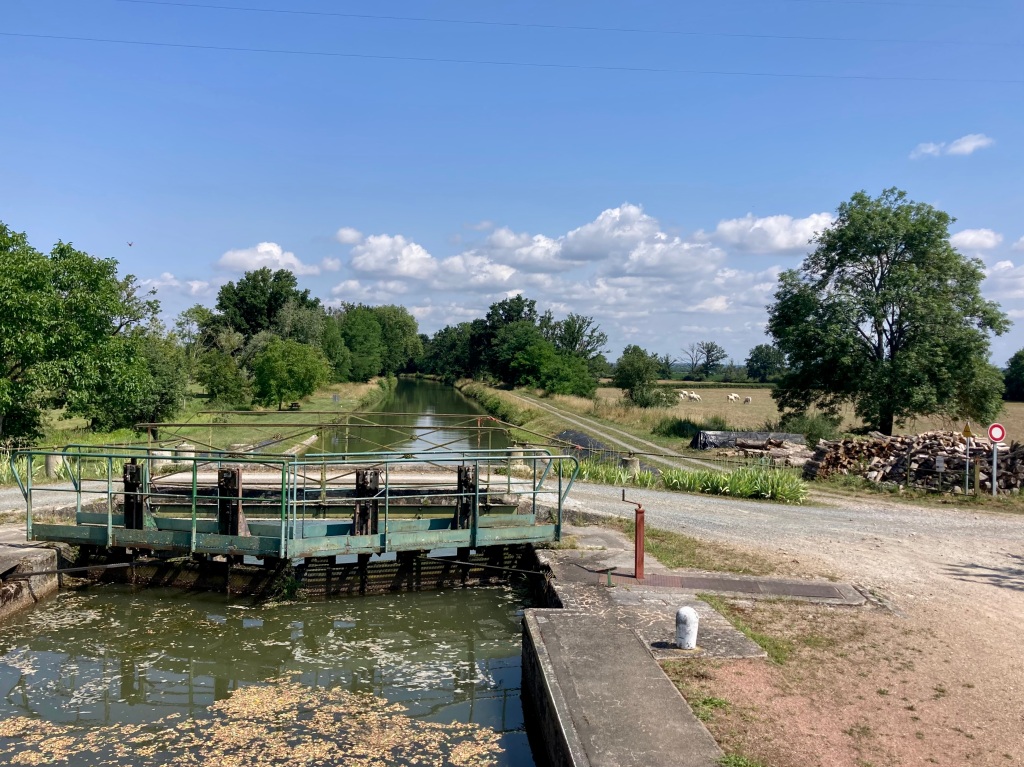
That was our last lock of the day, not far from Les Vanneaux, by Gannay-sur-Loire, where we hoped to be overnight.
And yes, the Gods were smiling on us again; we came into the little port of Les Vanneaux to find no other boats, except those in the adjacent boatyard (which apparently is a very good place to have work done on your boat).
We were ready for our usual apres-midi routine; moor up, lunch, siesta.
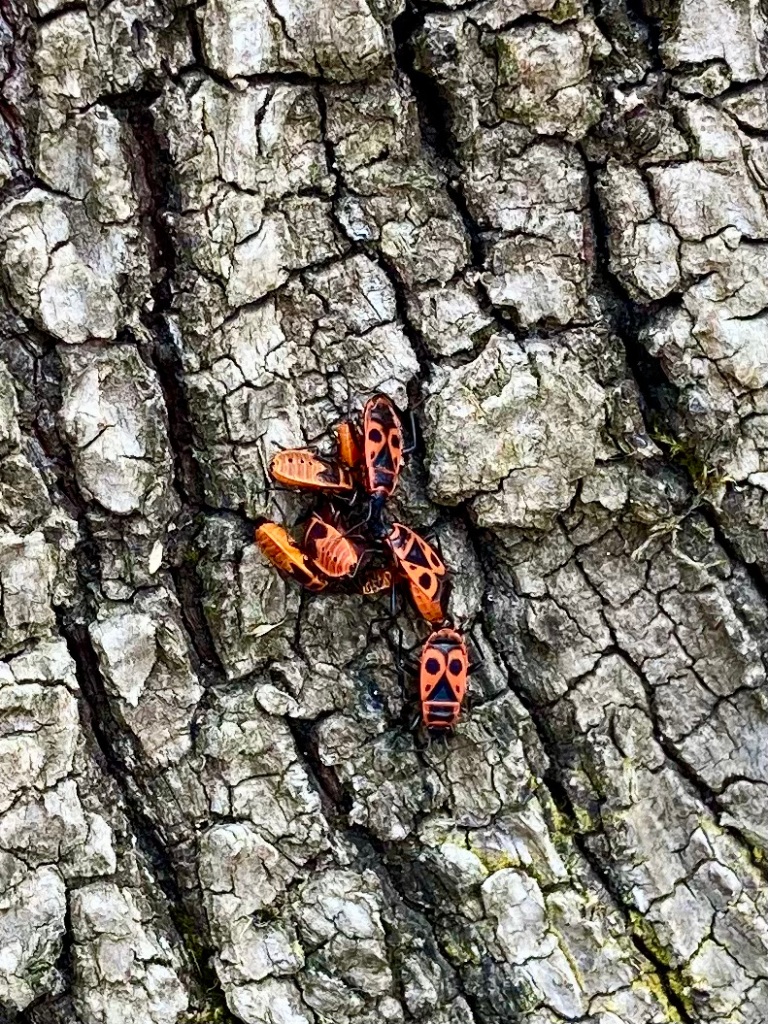
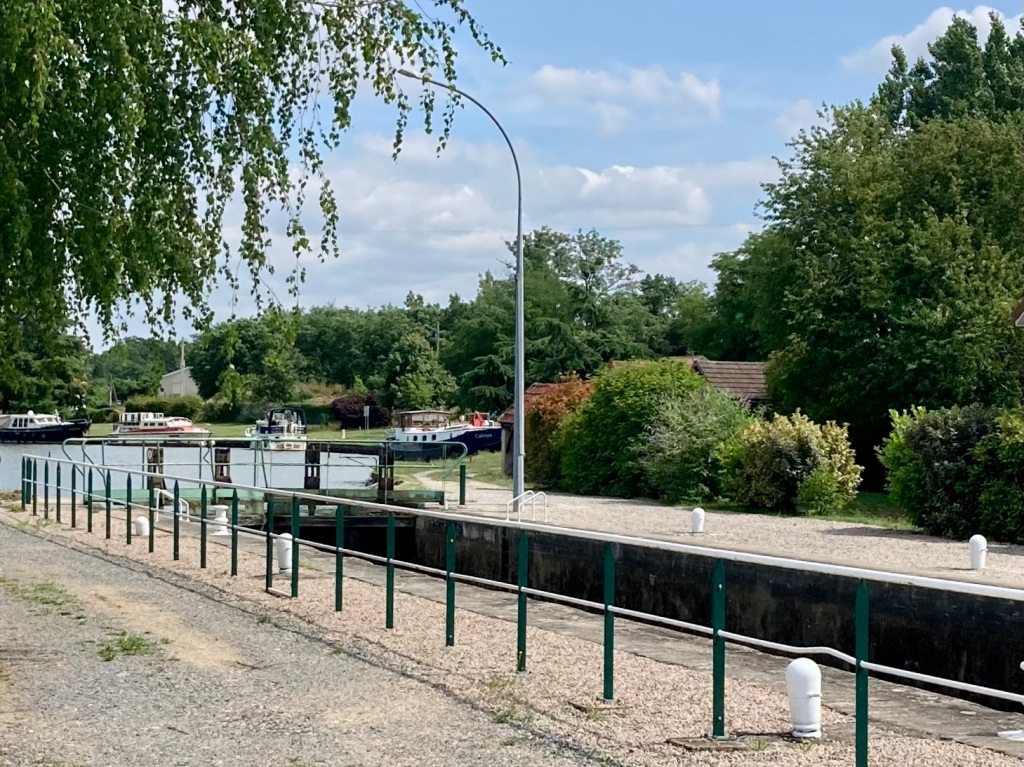
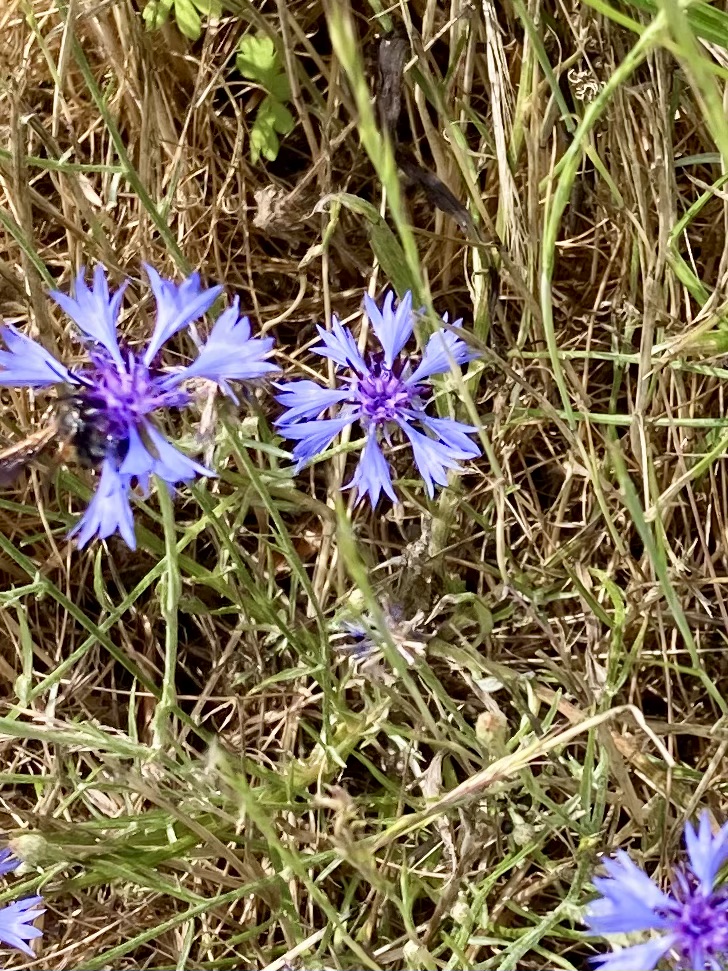
After that we were up for a little explore, walking into the village of Gannay-sur-Loire, over the lock bridge and a kilometre along the road. Sadly the bars, and few shops are all closed now. We sat down in the shade by the church and its famous Arbre de Sully. For some reason I did not photograph either of these, but instead took a photo of the red and black beetles, and the startlingly blue flowers (scabias?) along the roadside.

L’arbre de Sully is worth a mention. It is a remnant of a tree that was planted under King Henry IV to serve as a distance marker between Limoges and Autun. It’s not my photo, obviously.
That makes it over 400 years old.
The ankle was healing well, but still found ‘long’ walks (2 km!!!) a bit of a strain so I was glad to cool it down in the canal when we got back.

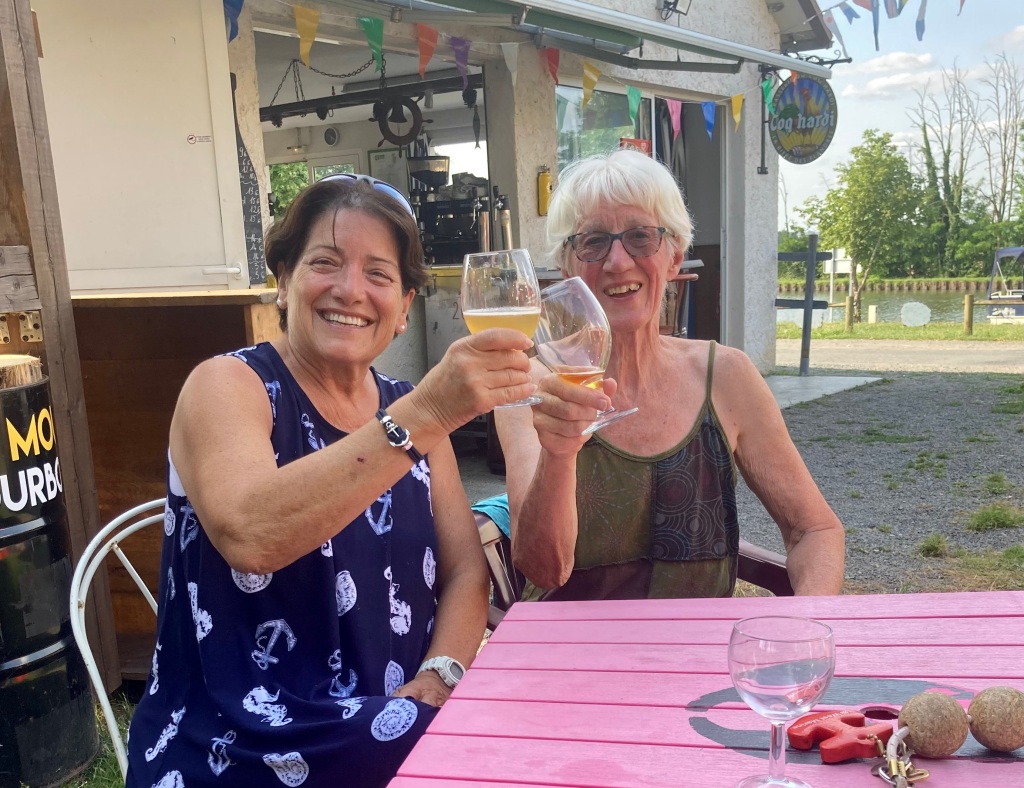
This was all preparatory to meeting up in the good Les Vanneaux canalside bar/restaurant with a new WOB acquaintance, Deb.
Women on Barges (WOBs) is an extremely helpful and friendly Facebook page, and the members tend to be pleased to meet up and say hello when their boats are in the same port.
Meeting Deb and husband Bob, with Stewart too ofourse, rounded off a good day on the waterway, and there was no doubt that our paths (wakes??) would cross again.
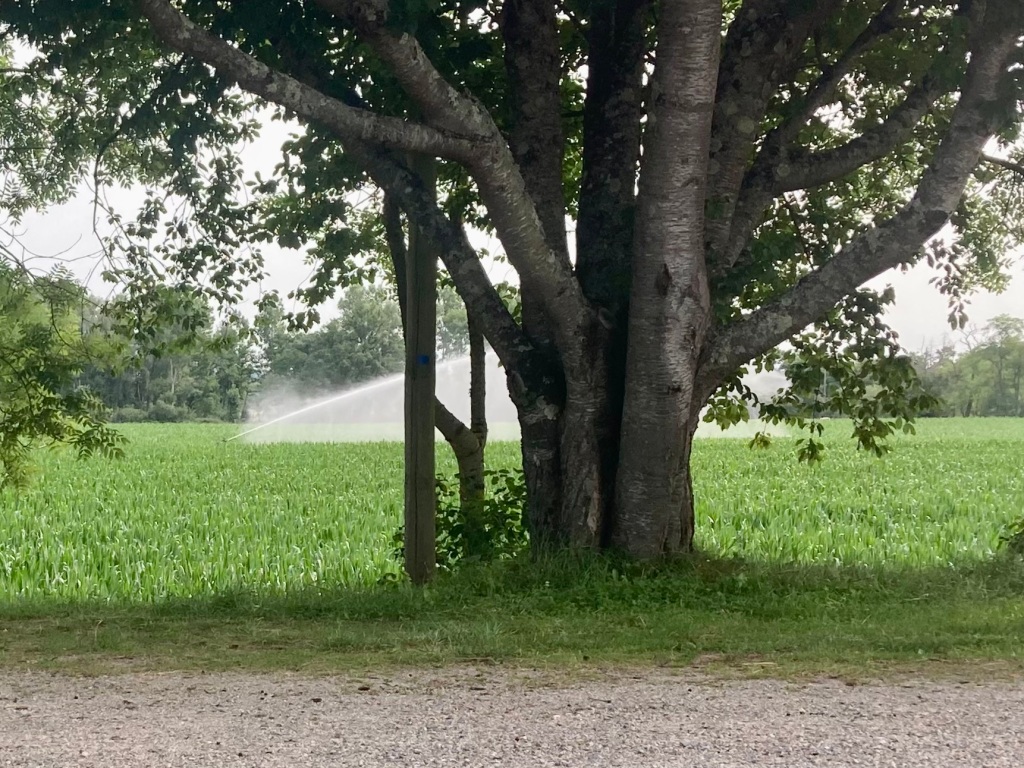
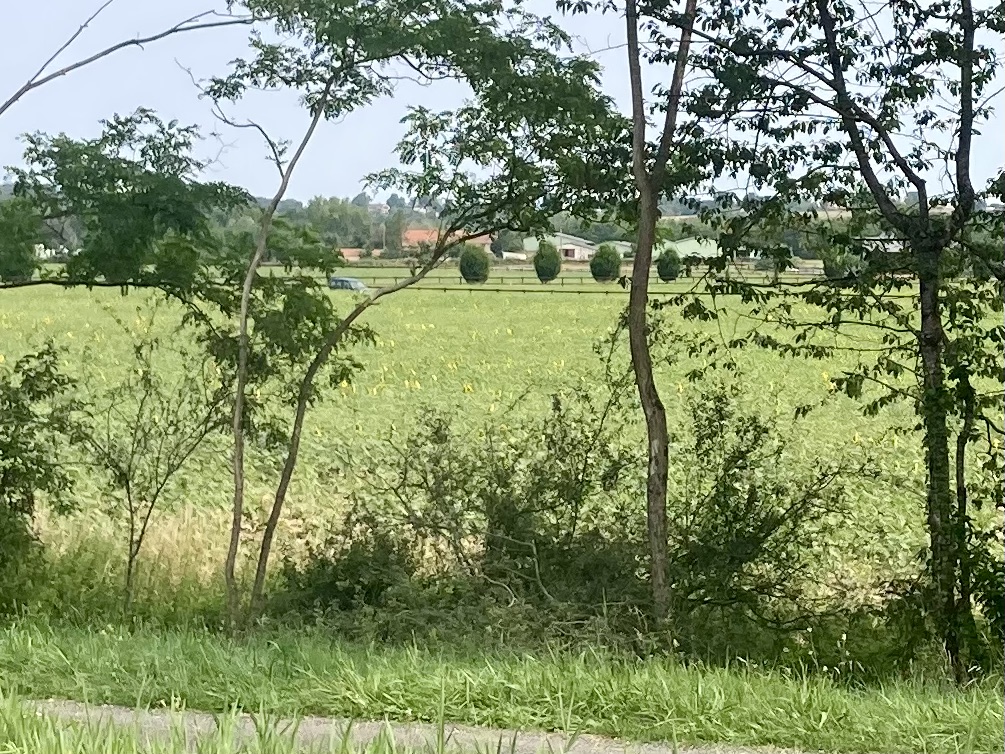
Soon after setting off the next day we saw new evidence of the hot summery weather. Farmers were needing to water their crops with giant sprayers, and there were the first tiny glimpses of yellow in the some of the fields – sun flowers beginning to open their happy golden faces towards the sky.
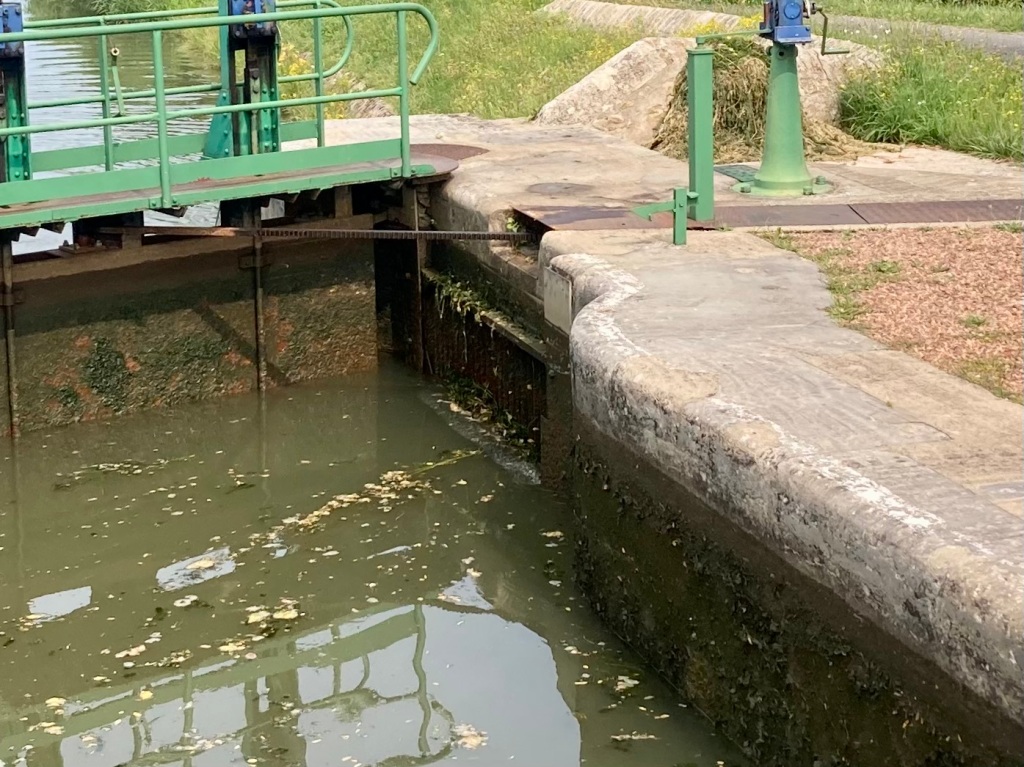

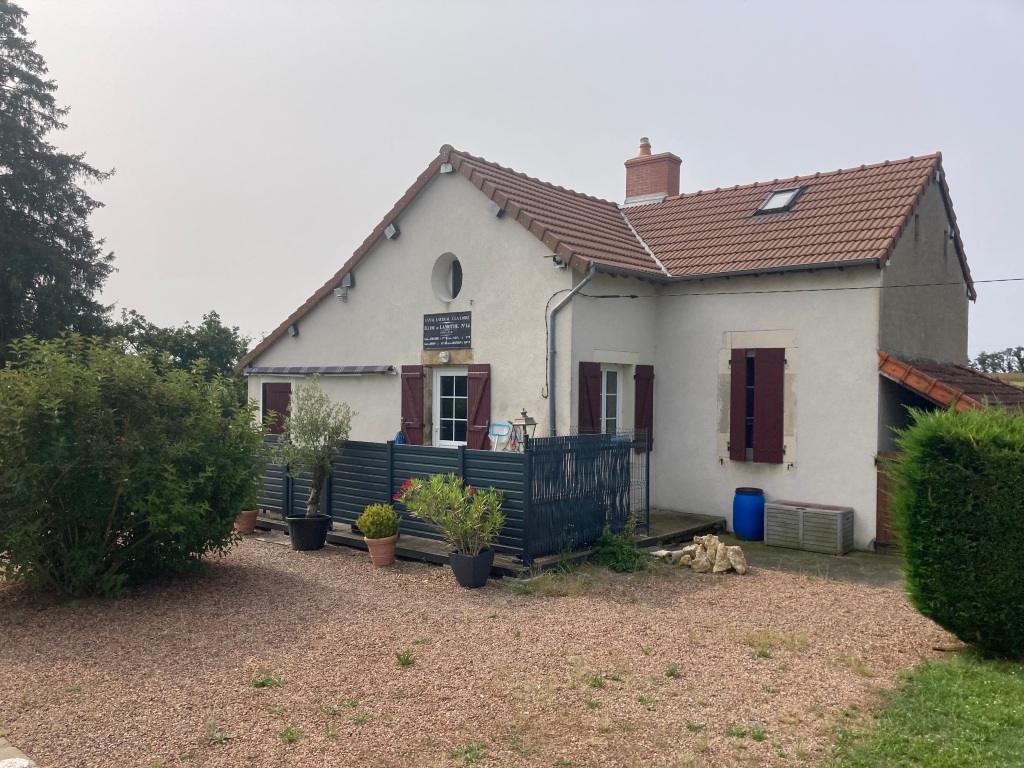
The locks also had a difference to them. The method of emptying them, normally through raised vantelles, or ‘paddles’ on the gates gave way to big grills at each side, leding into sluices that the éclusoier could open or close.
And the houses that were occupied by the éclusiers of the past had a new shape to them – the round windows began to become a feature. Actually along this stretch we did meet a couple of éclusiers who still lived in lockside houses – a wonderful tradition and sad to see it has almost gone. (More of this later)
The end of that day was to be Décize. I had phoned ahead and booked us three nights in the port that is just off the Canal Lateral à la Loire, and leads on, via the Loire, to the Canal de Nivernais.
We arrived at the big lock that drops boats down onto that stretch of the Loire river; we could see the gantry and the blue rope that has to be pulled to open the lock gates. It was the far side of the lock entrance and not very convenient for any boat arriving from our direction, especially an almost 20m barge like Calliope.

We managed the manoeuvre – just seconds after a holiday boat below the lock pulled the rope on their side; this obviously took precedence over us.

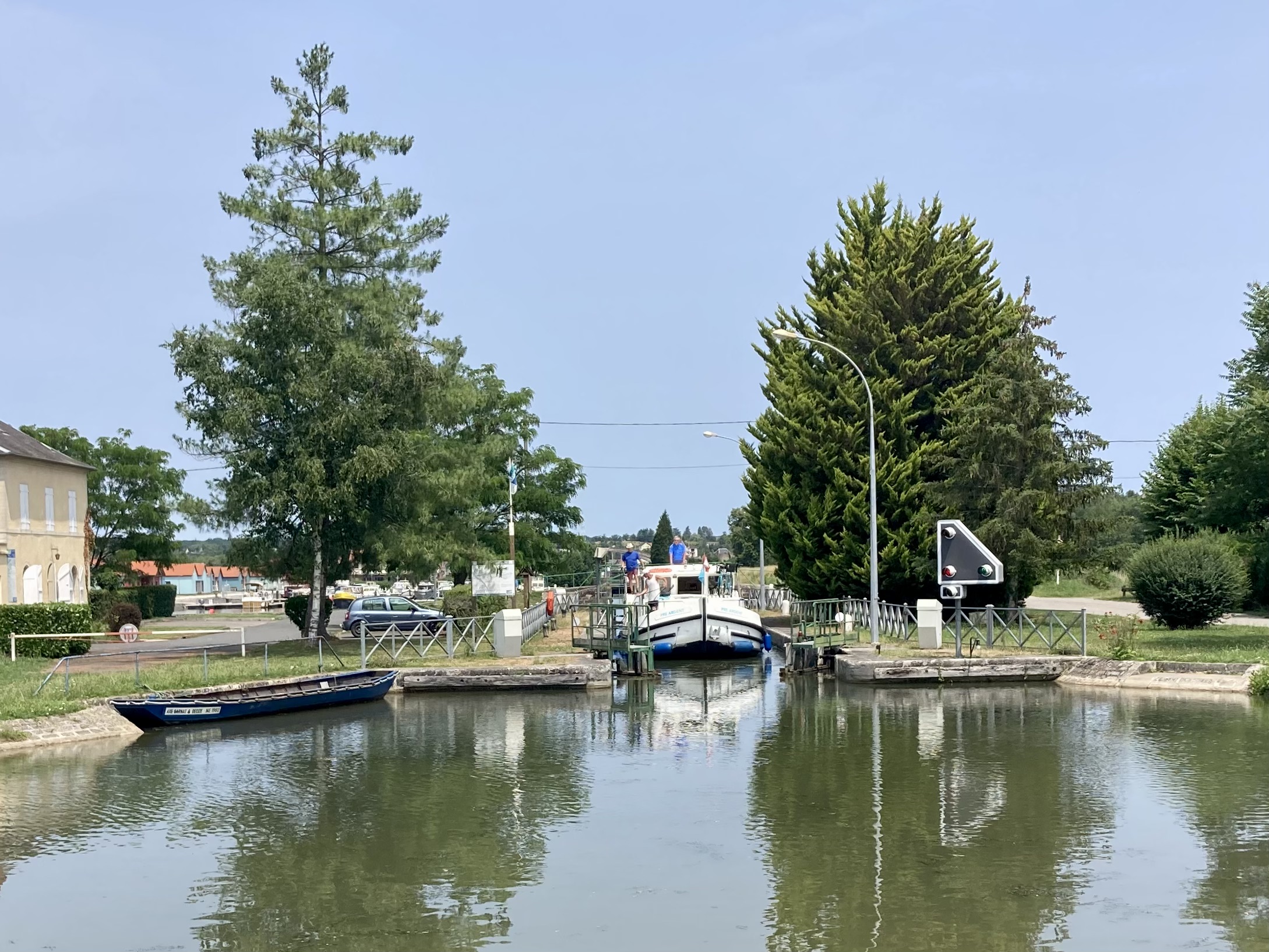
So we bobbed about for 20 minutes while they traversed the lock, and then our turn to go down into the port.
From the top of the lock we could get an initial idea of our mooring options.
The port was, for us, a bit of a disappointment. Despite explaining the size of Calliope when making the booking I was not warned that all the berths were on 10m long finger pontoons. It is fair to say that other boats of our length had moored astern between the fingers, but it is not our preferred way to moor – and we had another option about 500m away, the other side of the second lock.

So that is what we did, moving on through the second lock – and it was wonderful. We were now just below the old town of Décize on a quiet river mooring; perfect.
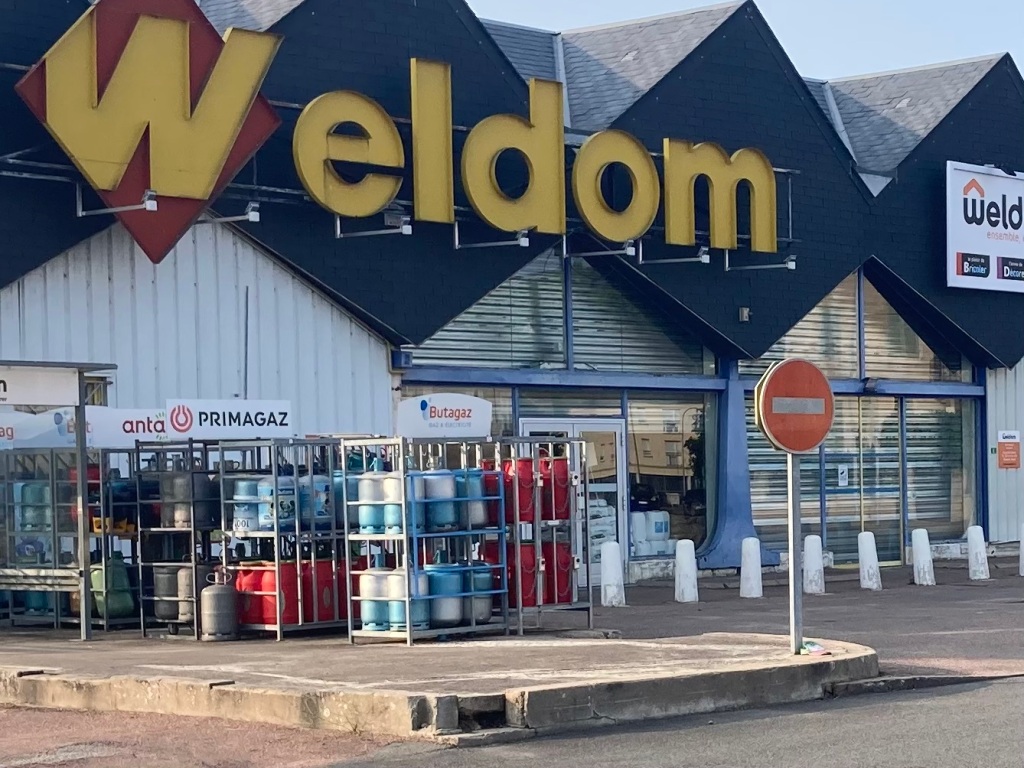
And, within sight of the mooring was a Weldom brico (DIY) store selling replacement Butagaz bottles. For the past couple of weeks the captains log book has had a laser display screen (post-it note) poking out saying ‘Gas!’, and the afore mentioned skipper pretty quickly returned from down below with a smile on his face and a sack truck ….
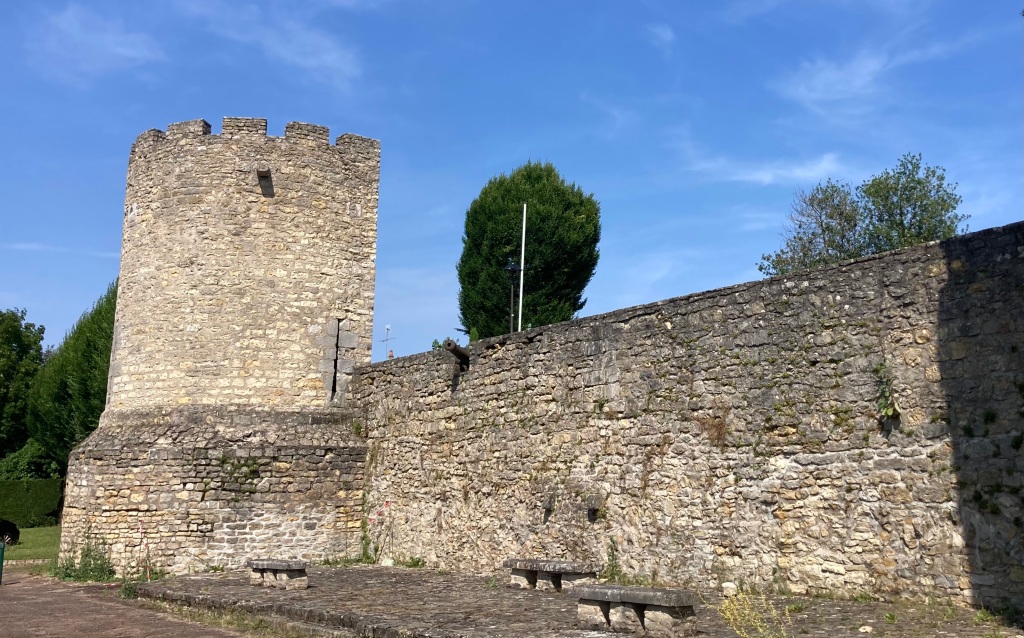
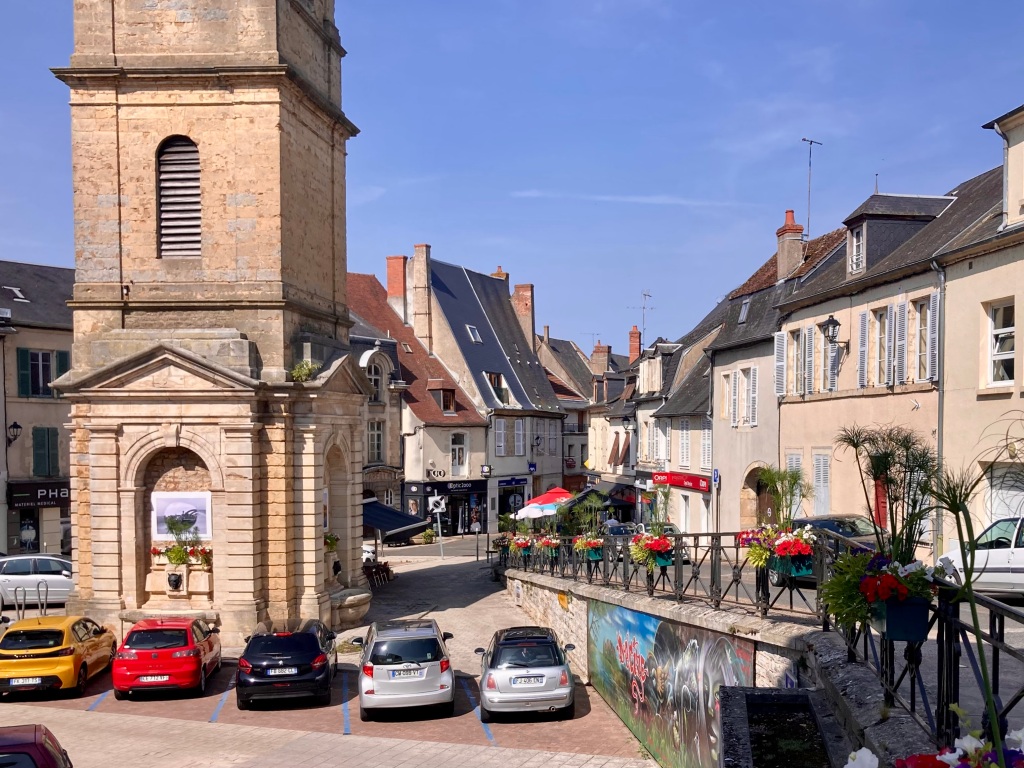

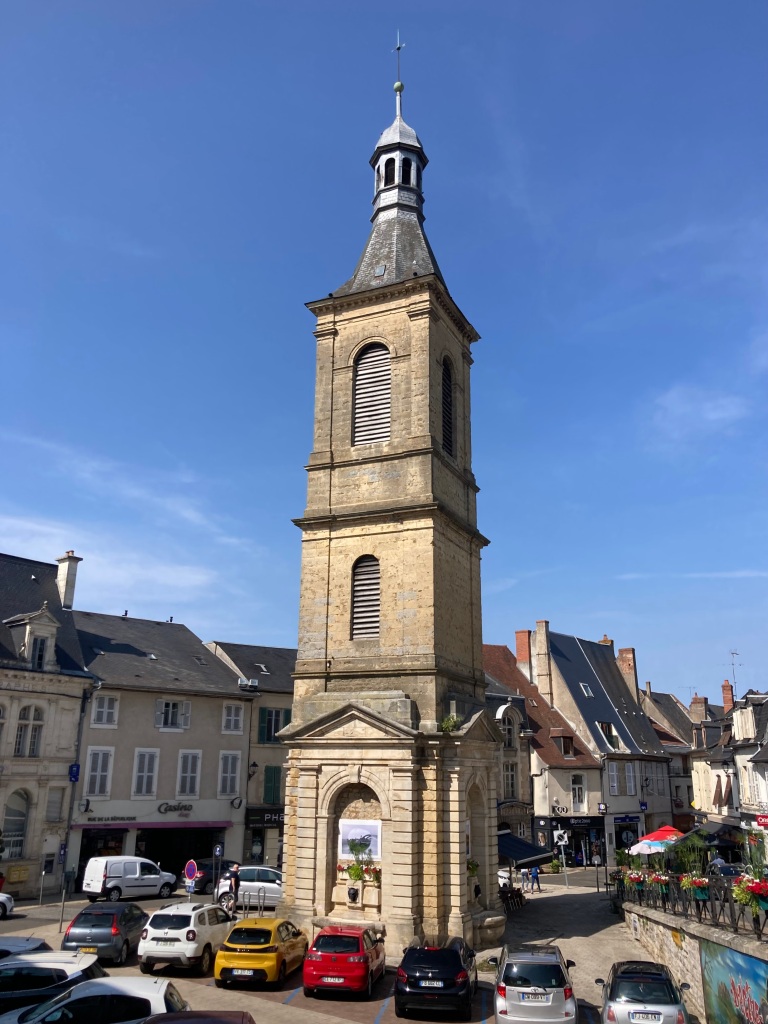
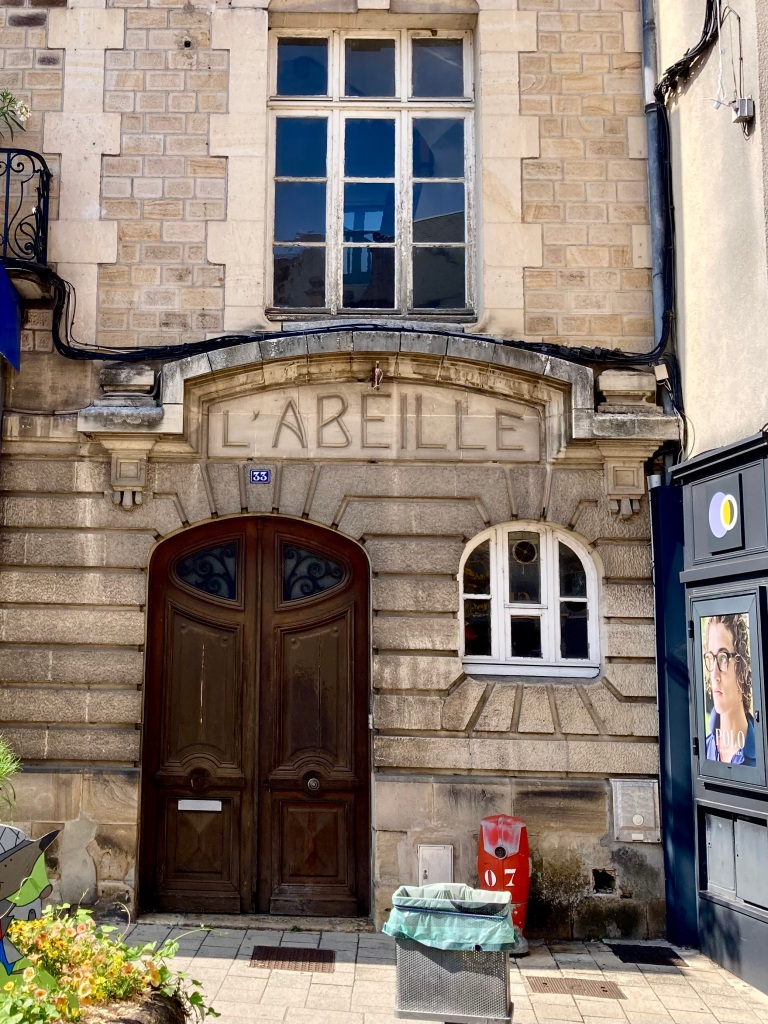
Towards the end of the afternoon we strolled into the town, passing old buildings from various centuries. It is worth looking around Décize and learning a bit of its history as a city on the Loire.
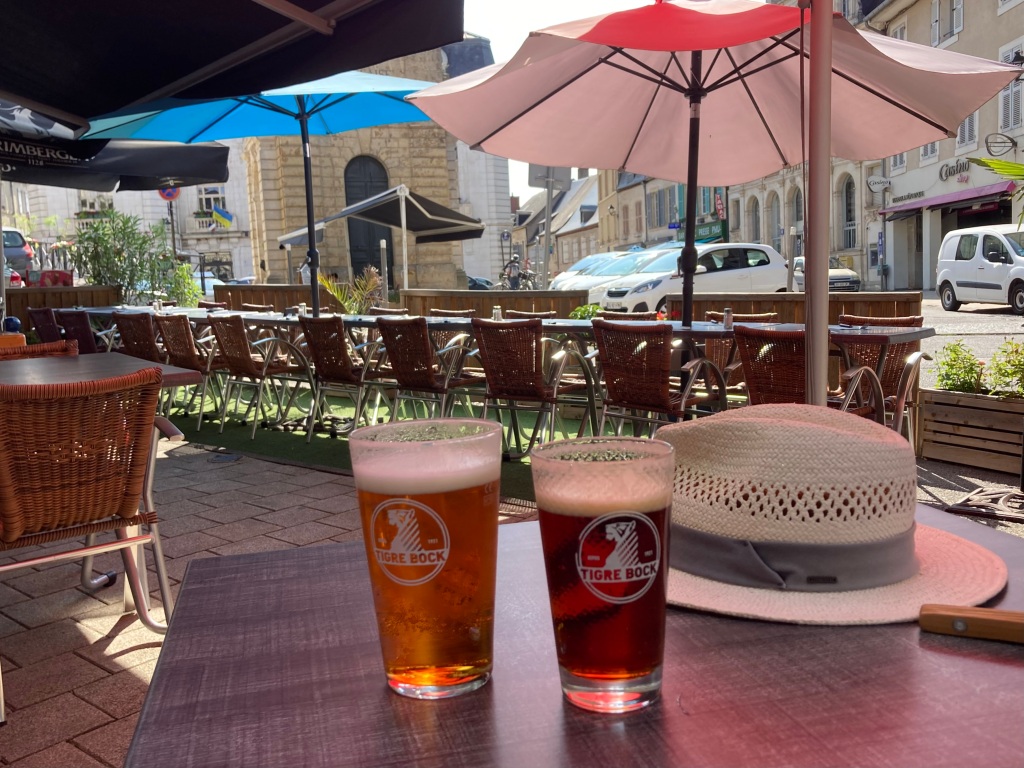
As luck would have it (ha ha) there was a convenient bar in the centre, and we were soon sat beneath a parasol with a cool beer, watching the Décize world go by, before returning to Calliope by way of a riverside crèperie for supper.
On the way hack from town from the bridge I got another angle on the old towers and walls of Décize .
Our mooring was about 150m to the left of this photo.


Contentment, watching the sun go down across the Loire.
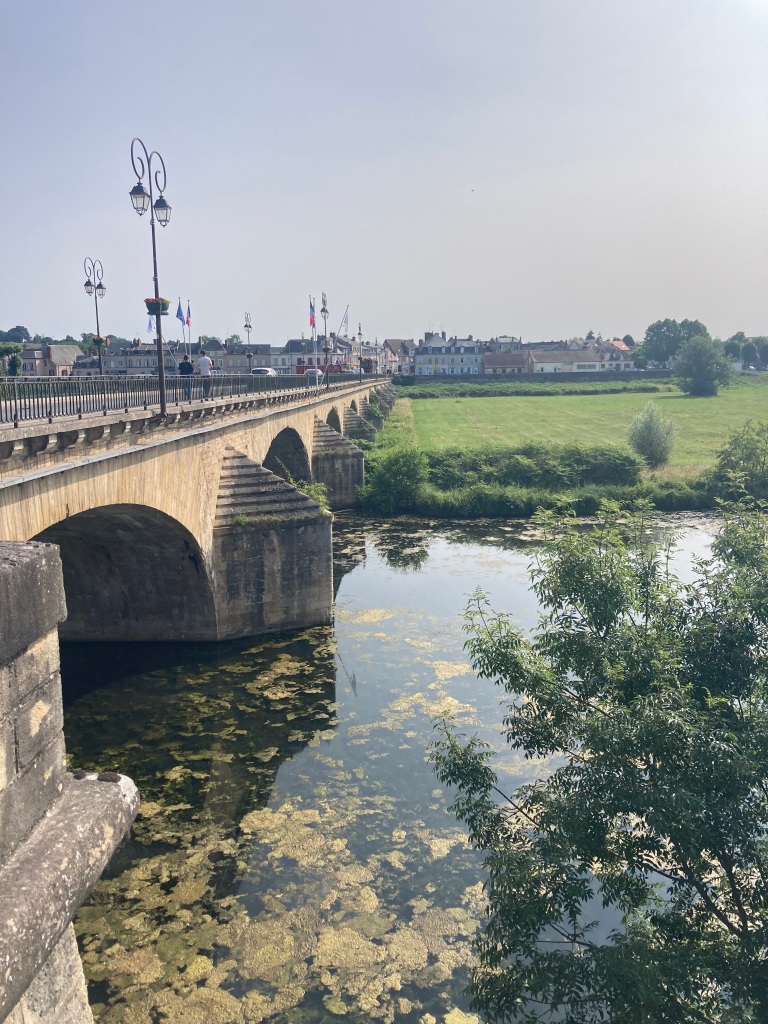
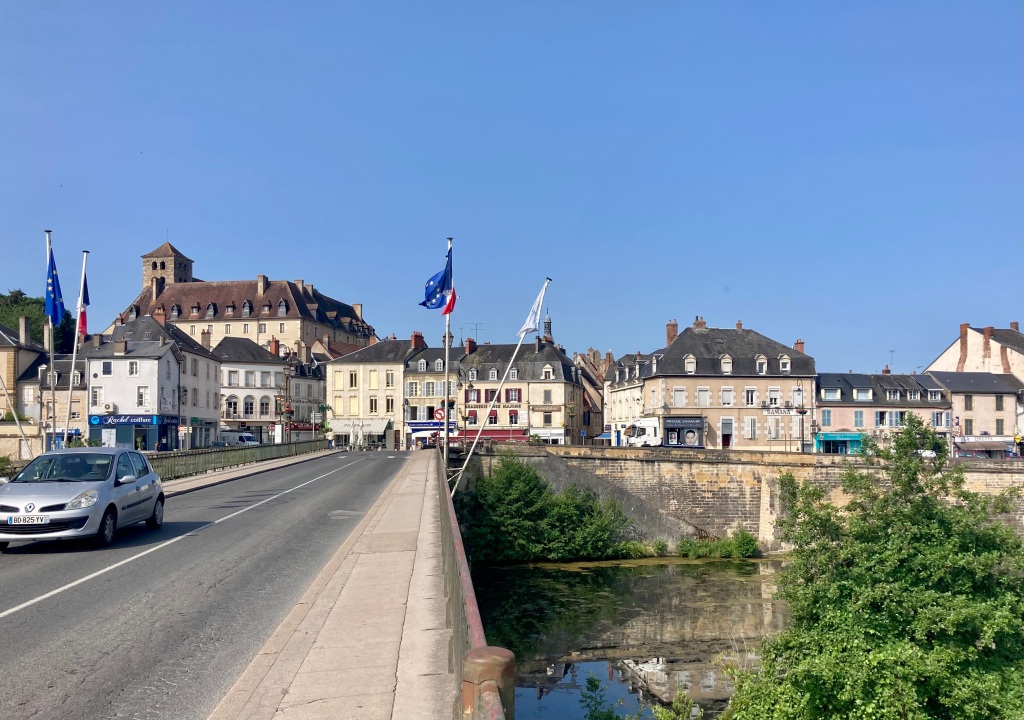
The next day we walked up into town, down the other side, and across the old bridge across the river. Décize is caught in a loop of the Loire, so water and bridges all around.

I hope this map will help to show the confluence of vielle (old) and current Loire, plus the other waterways around the town (not sure if it is a city or a town!)
Our mooring is circled in blue.
That side of town I found a very good ‘Cave’, selling plenty of French wine, including local, a huge variety of spirits, French and Belgian beer and other alcohol infused goods. I only needed to taste one wine and knew that was the one for me, so took some back to the boat.
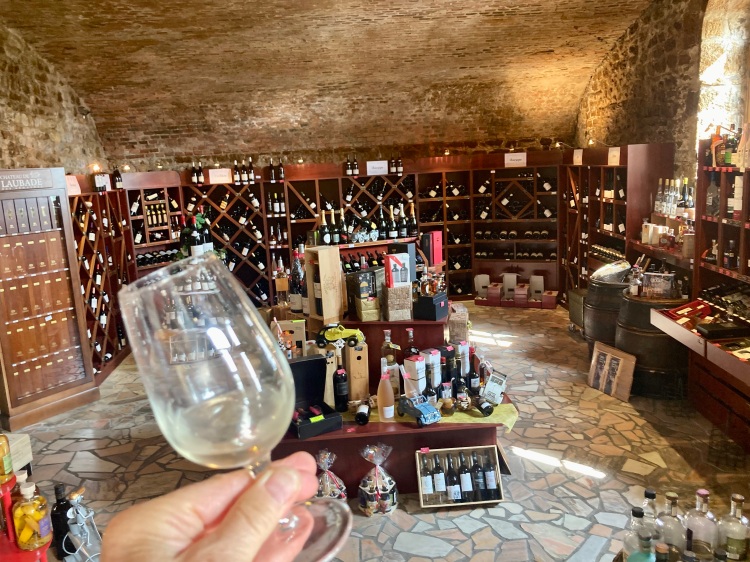

(Just another view of where we were moored up; so peaceful compared to a busy port.)
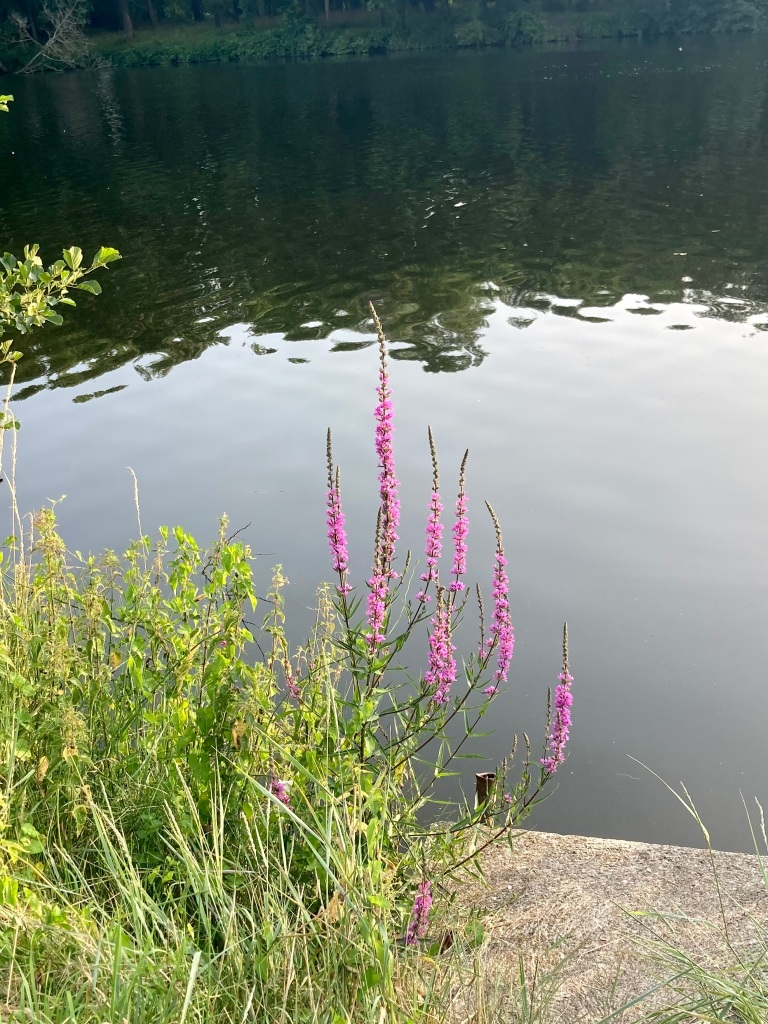
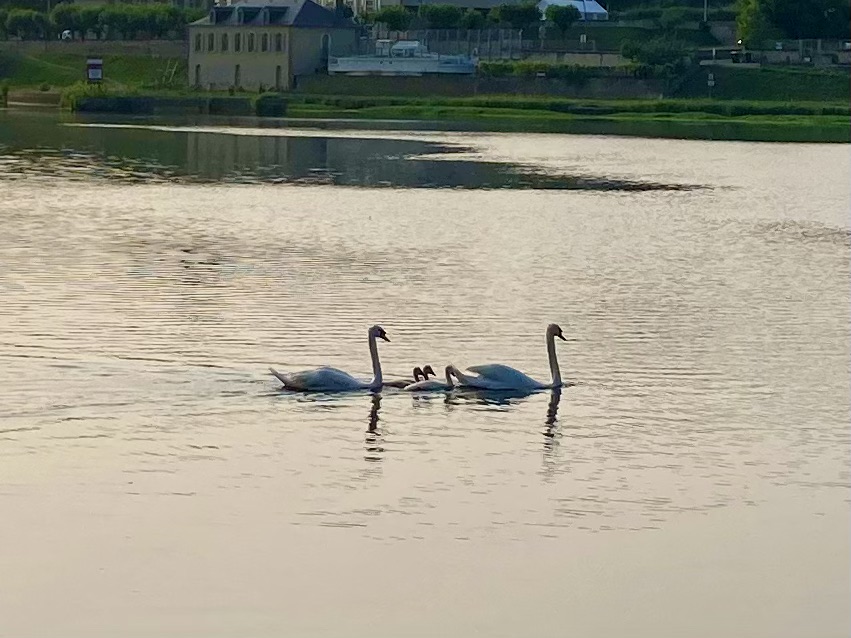

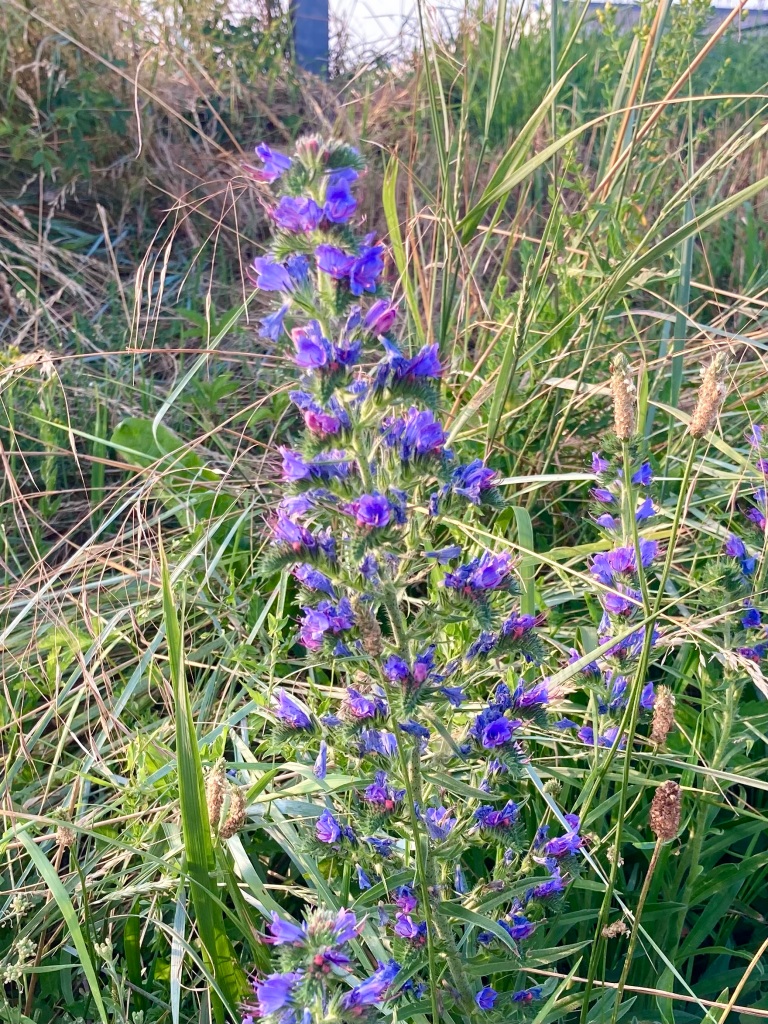
On our second evening I walked along the bank to where the old and new Loire meet. The evening light with the sun setting caught these flowers and swans just right.
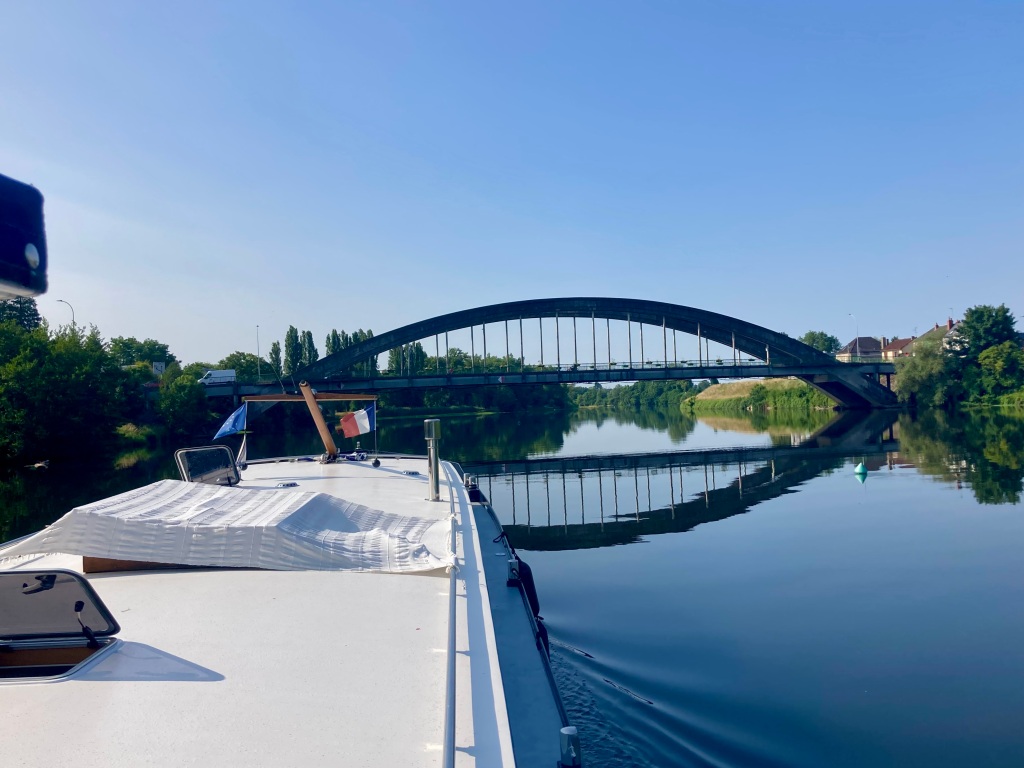
After two nights on that Décize quay we needed to move to another Décize quay, back onto the canal and closer to the town’s supermarket. So we set off under the bridge, retracing our steps towards the two big locks .
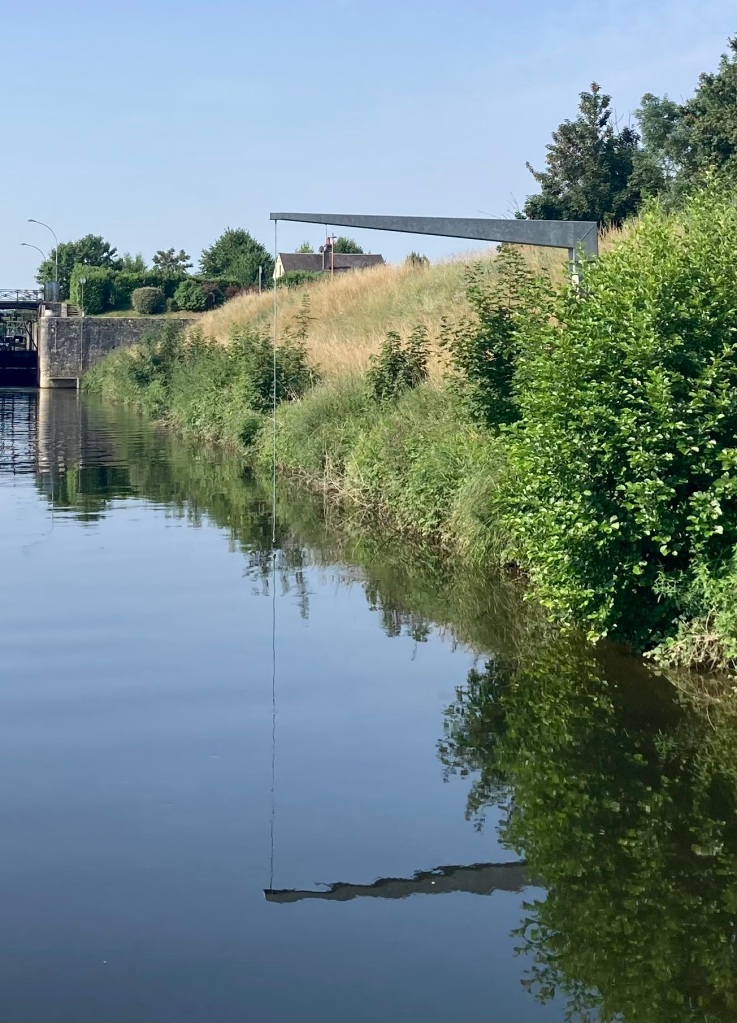

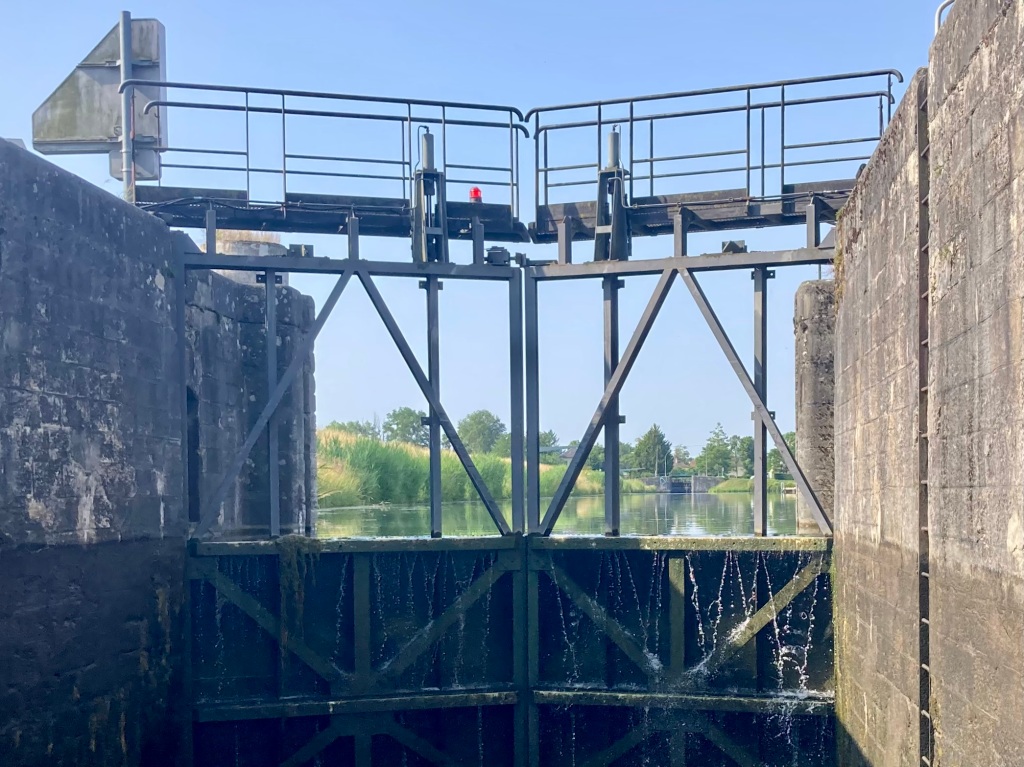

The blue rope hanging from its gantry was much easier to grab this time and the lock doors opened for us. We are always pleased to see either floating bollards or, in this case, ‘slidey poles’, both of which make tying up at the bottom of a deep lock much easier.
It means I have more time and freedom to take photos of the unusual ‘windows’ at the top of these doors, and of the rush of water coming in to fill the lock.
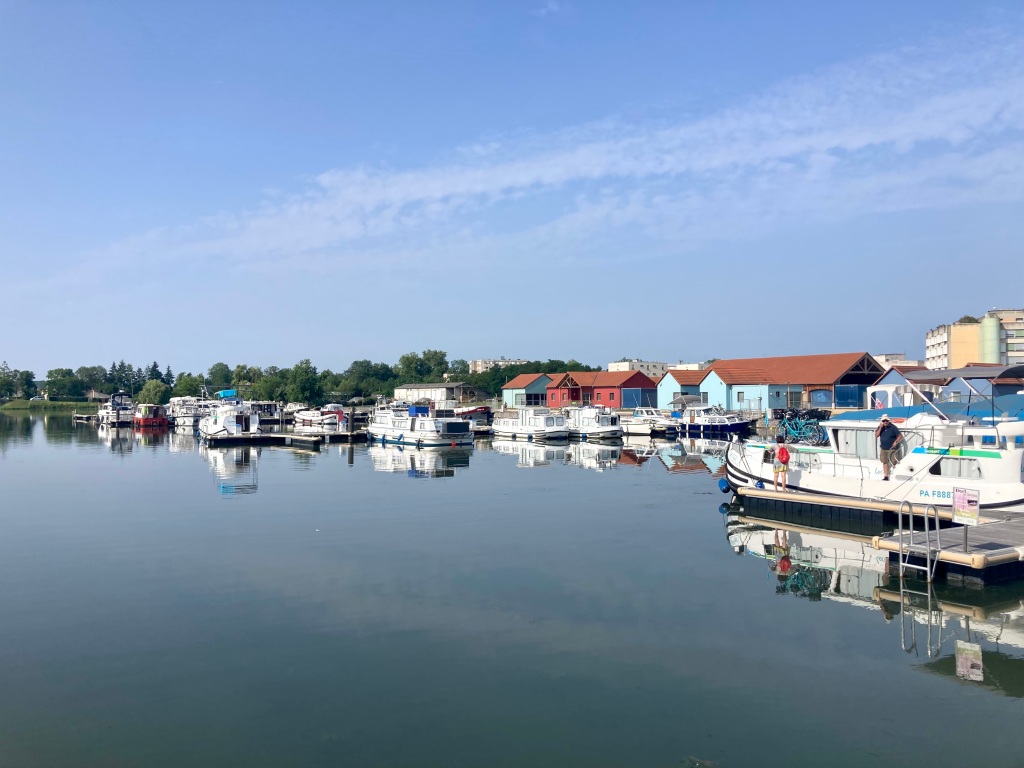
We crossed the port once more towards the second lock out onto the canal, at the far end (left side of photo). All was very calm and tranquil within the port.
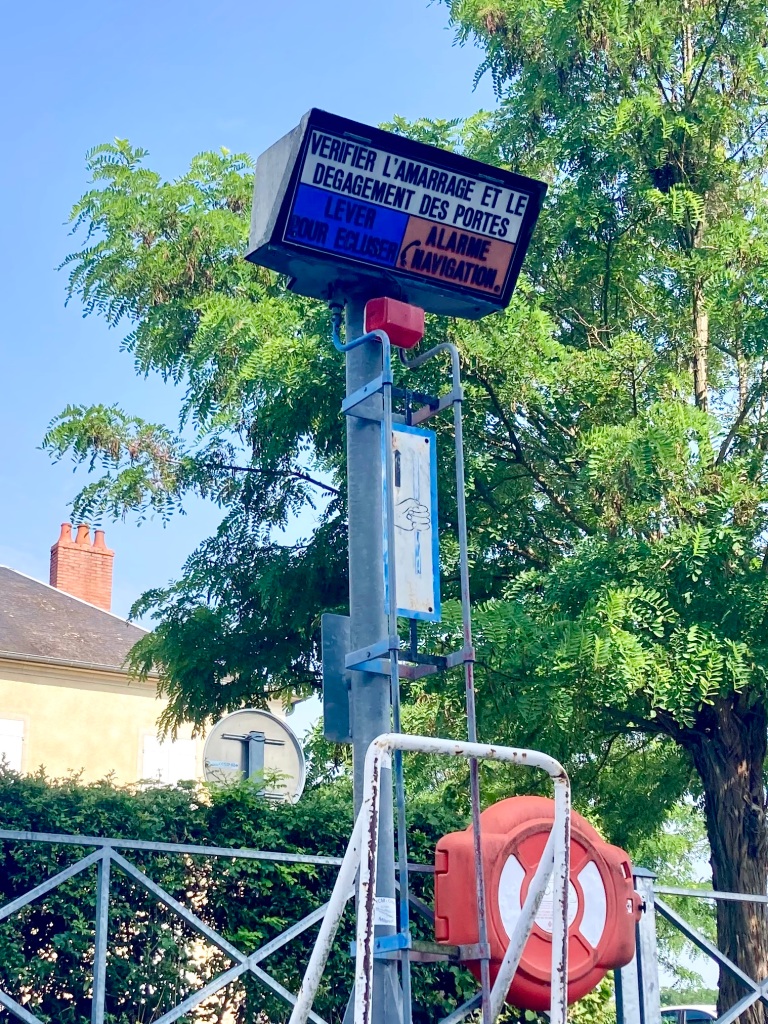
Inside each of this type of lock is the second blue rope, or cord, or lever.
This is the one we have to pull down or push up, depending on the mechanism, so that the lock operation starts.
There are good French instructions here, and sometimes English and German as well.

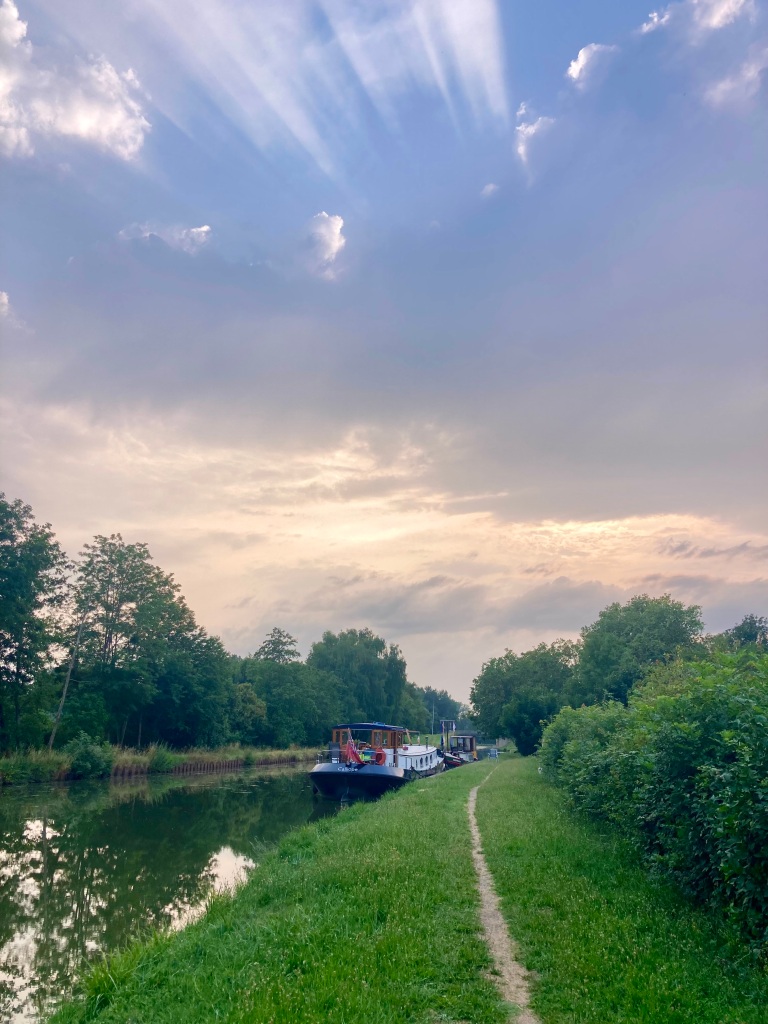
Only just outside the lock and back on the Canal Lateral à la Loire was the quay we had in mind – and apart from one other boat it was empty; result!
Those who are eagle eyed will have spotted the gantry and blue rope behind us, waiting to be pulled by the next boat wanting to descend the lock into the port.
Mooring here accomplished just what we wanted; a 5 minute walk to an Ingtermarché supermarket and a topping up of the store cupboard and fridge. We stayed on overnight before motoring towards Fleury-sur-Loire, a place we had been recommended by Deb, my new WOB friend from a few days ago. It is her favourite mooring.
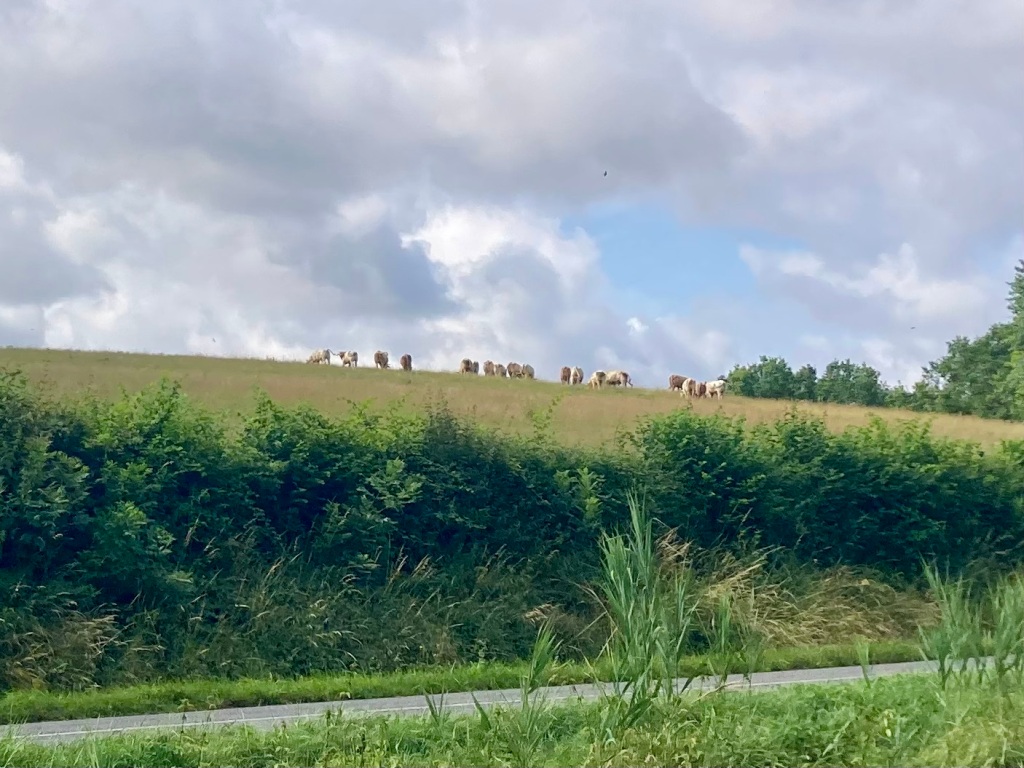

The 12 kms journey was very rural and had some of my most enjoyed landscapes – anything to do with farming. In this case I saw cows on a skyline, and fields of wheat stretching across to the river Loire in the distance.

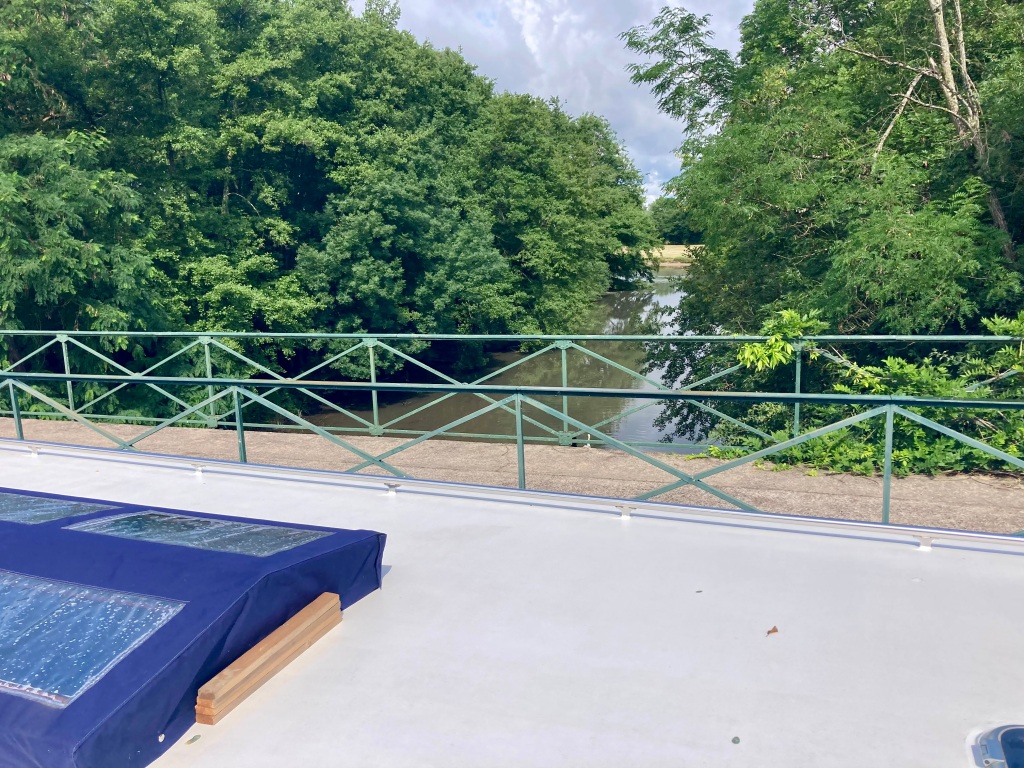
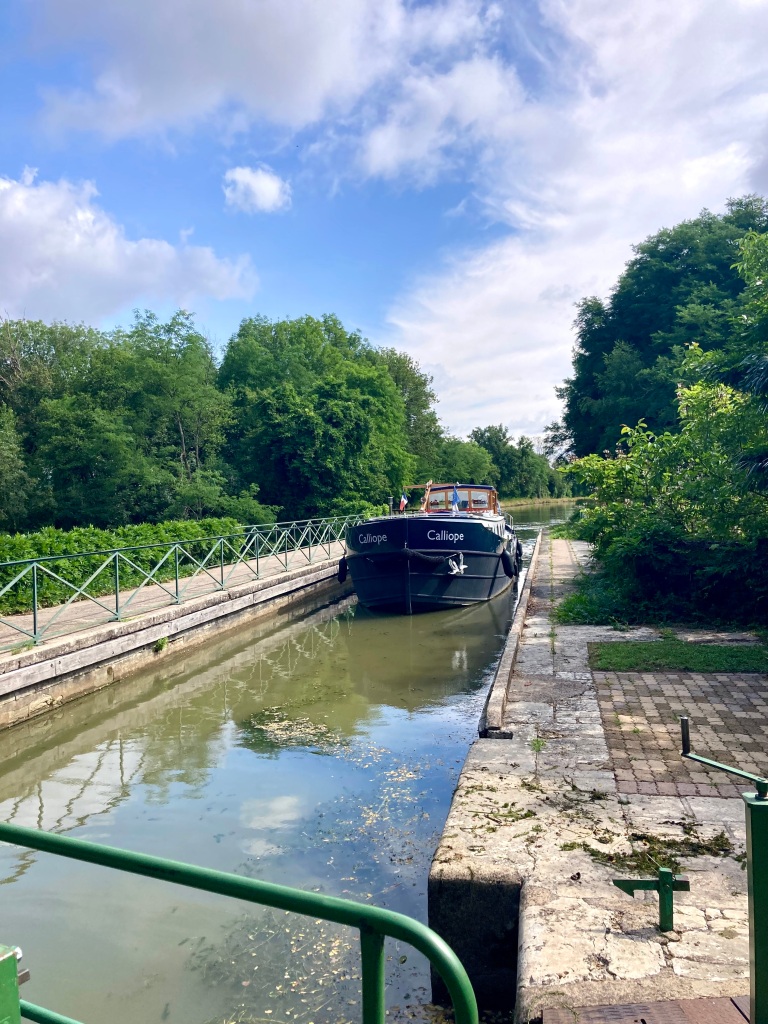
We went through several locks; this one was a bit memorable and different for several reasons. Firstly the approach was across a narrow ‘pont canal,’ or bridge, taking the canal over something, normally a small river. In this case it was over l’Acolin river.
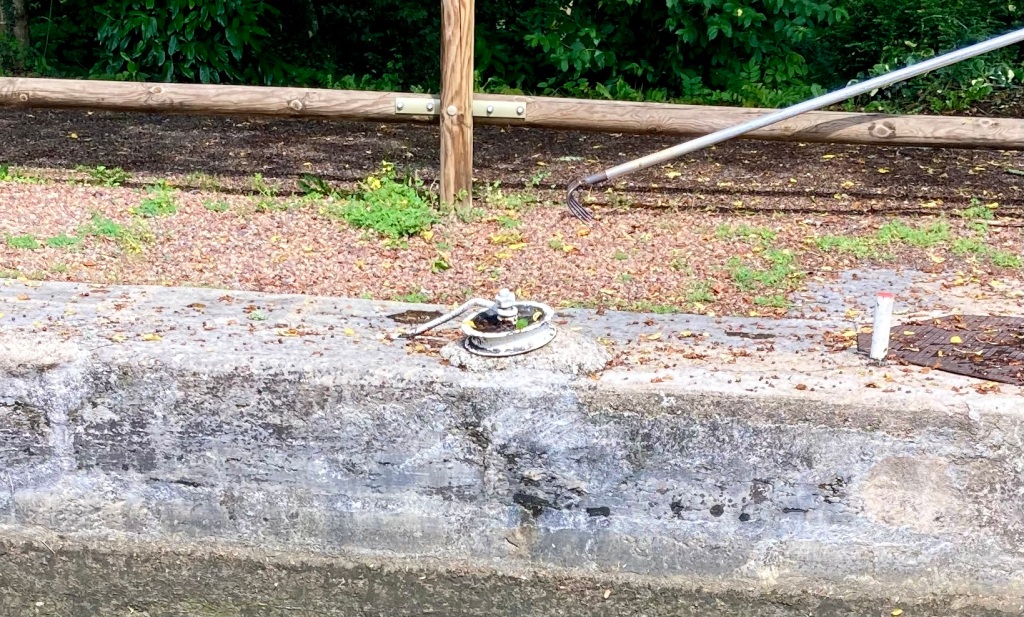
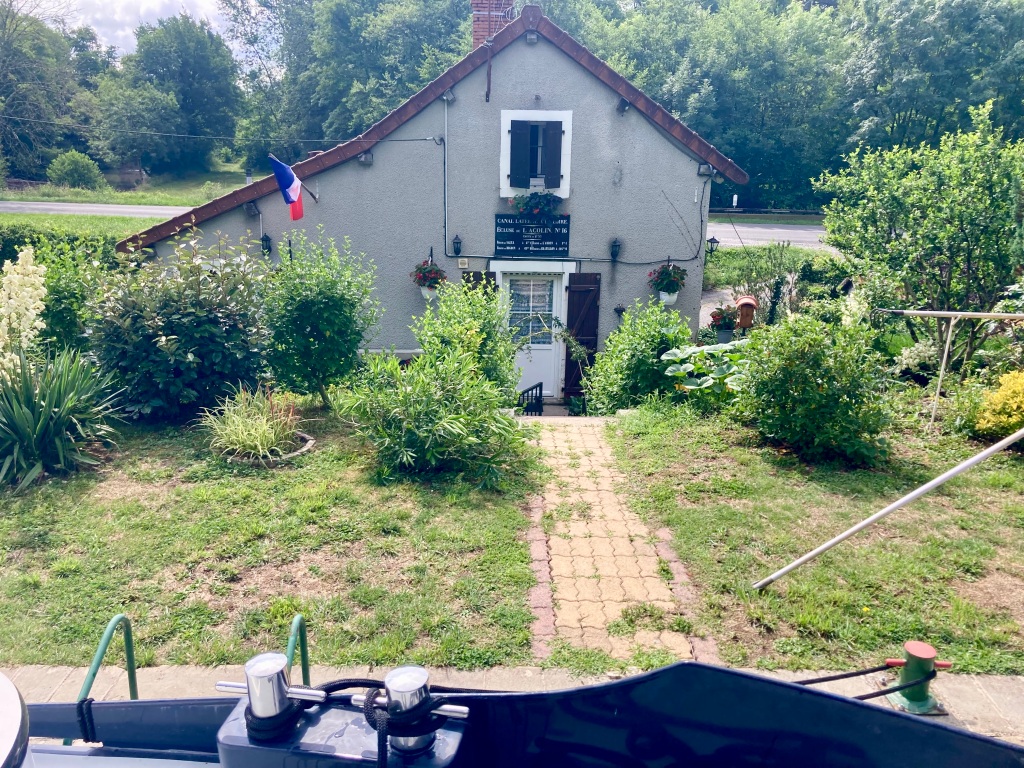
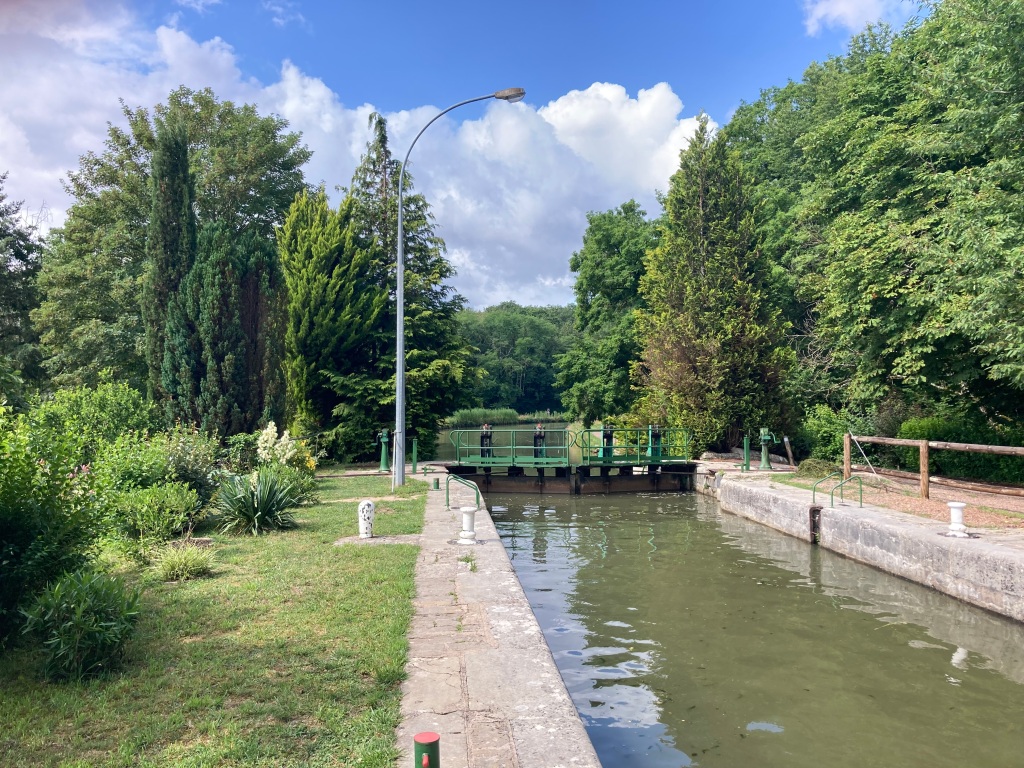
Within the lock it was good to see one of the old pulley style wheels that were used to help ‘rope barges into and out of locks. It was also one of those wonderful (to me) moments when you find you are working with an éclusier who lives at the lock in the lock keeper’s cottage. You can normally tell by the state of the garden!
And finally, it was simply just a lovely place with a beautiful view from the top of the lock.
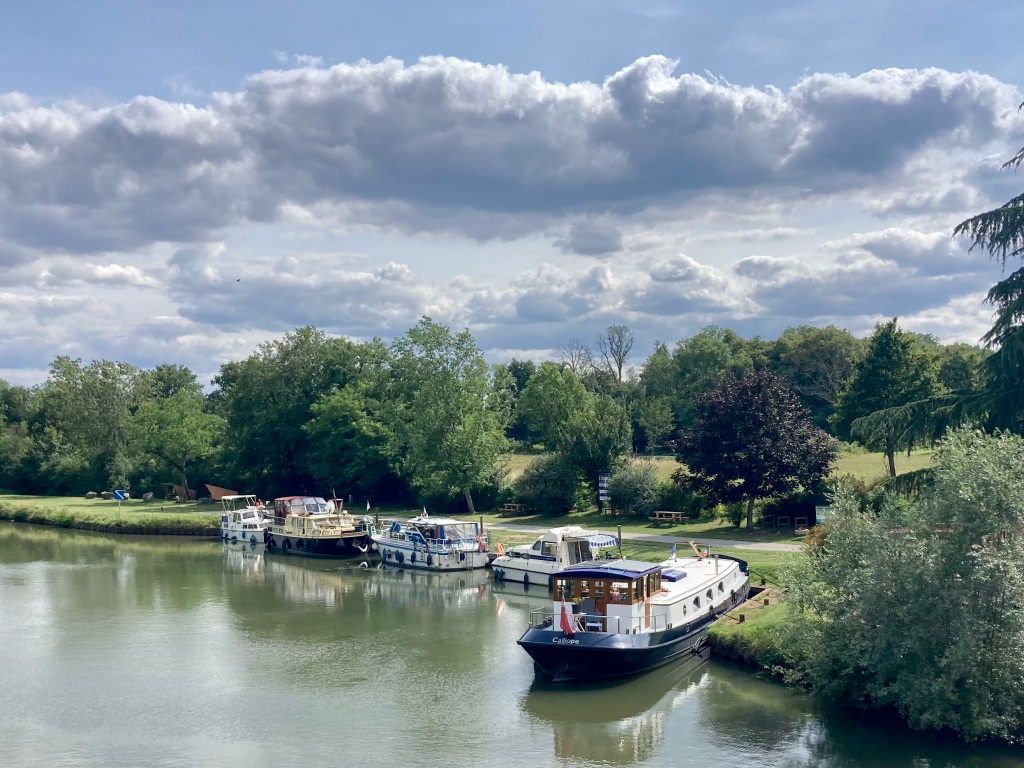
When we arrived at Fleury we could see that it was also the favourite place of several other boaters and initially it looked as if we could not fit in. However one boat moved up for us, leaving the side angle of the quay. Our stern stuck out a bit, but the canal widened here so Calliope would not cause an obstruction.
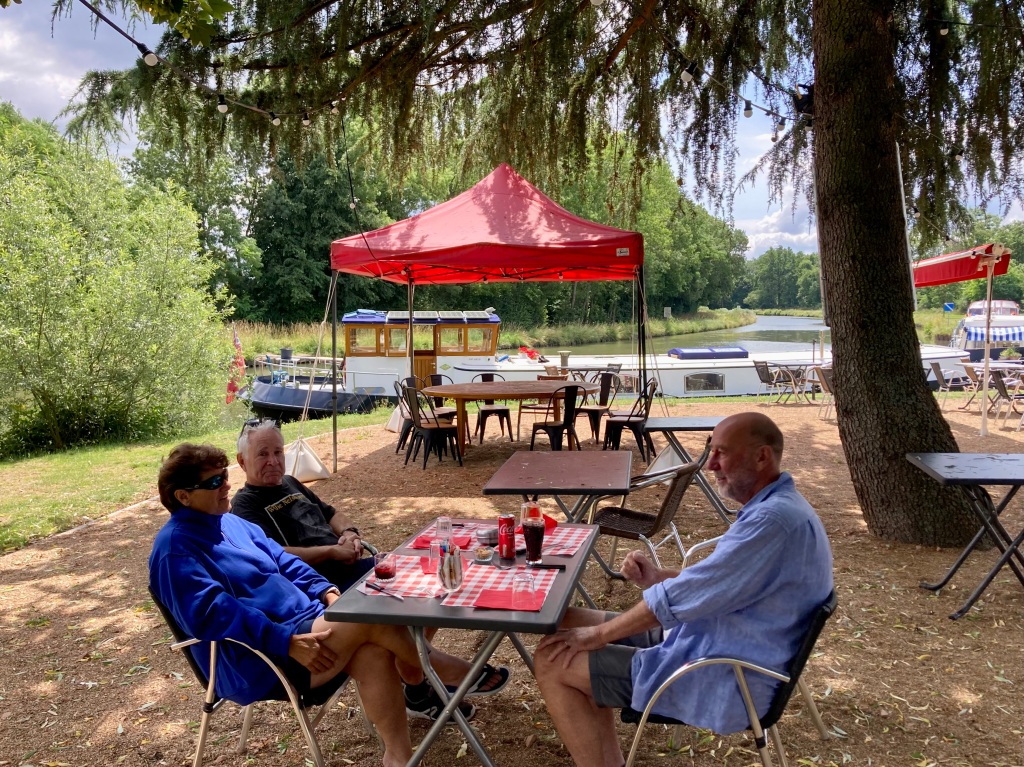
Our arrival coincided with lunch time; Deb had already booked a table for 4 at the funky adjacent restaurant, in the shade of some pine trees, and overlooking Calliope.
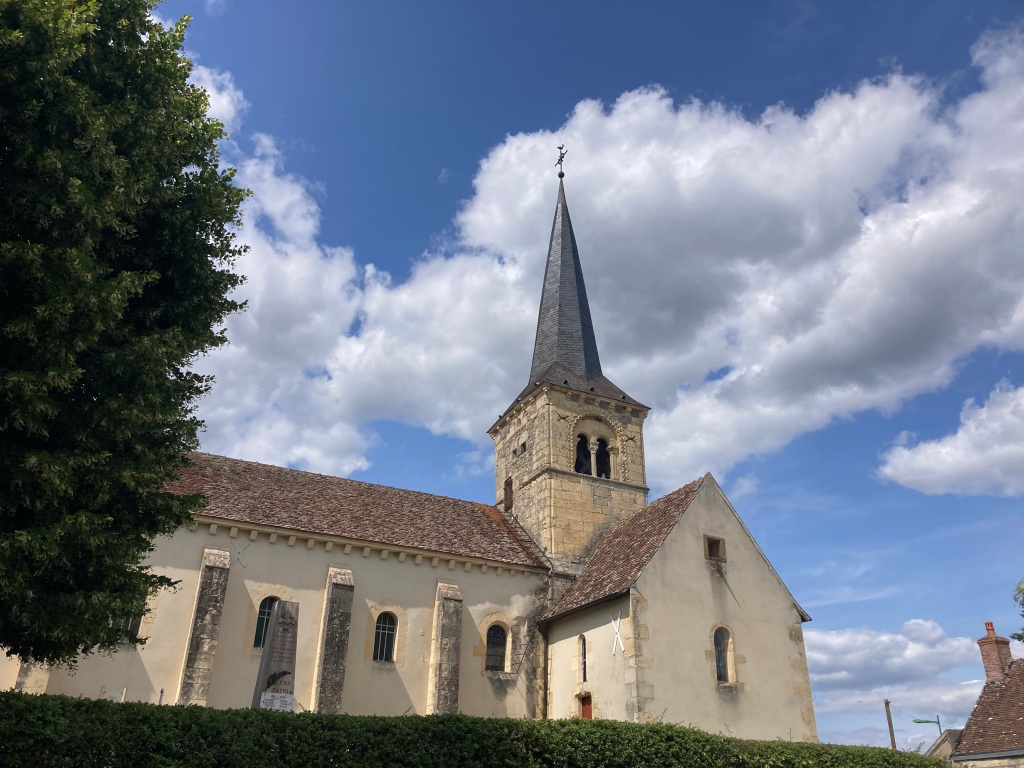


A full siesta collapse was required after a very pleasant very French lunch. But later with energy restored we went to have a look at the tiny Fleury village. These days it is surrounded by fields of grain. Apparently its older raison d’être had been kaolin, which was mined nearby. The village also has a much earlier history, linked to Gallo-roman times.
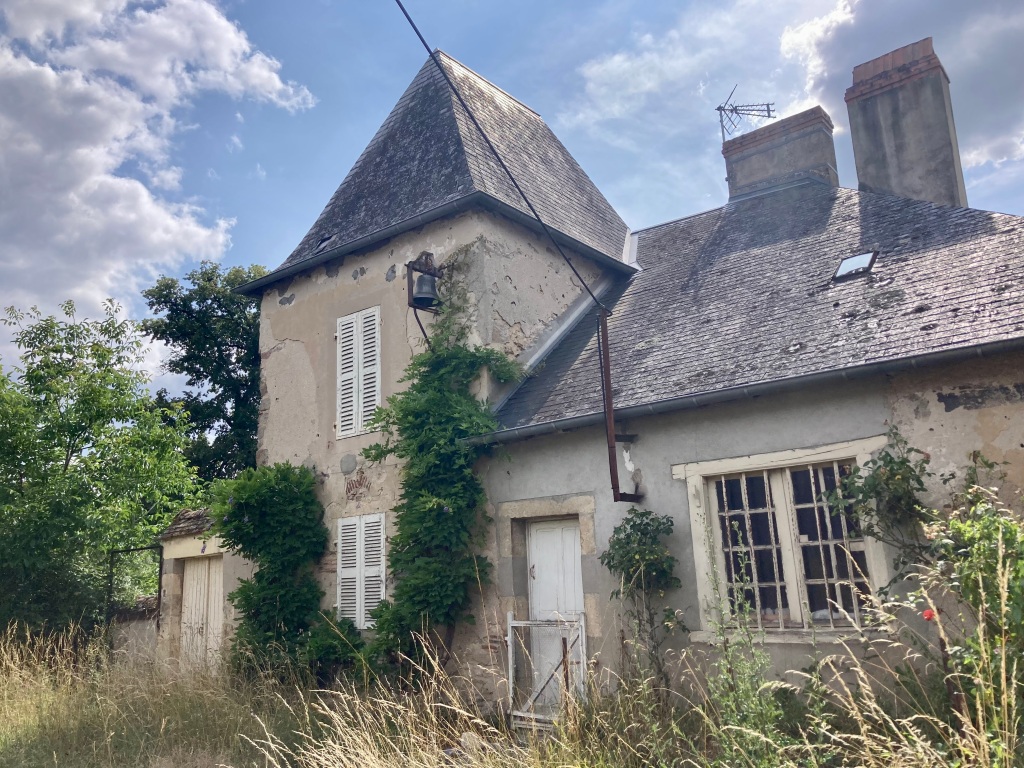


In addition to the old church there was a building that seemed, by the presence of a bell, to be an old school. And also , right beside us at the mooring, a very simple lavoir, or place for people to wash their clothes and household linen in the canal.
I was still working my ankle back to normal use, so went for a walk along the canal bank before bed.
It was a beautiful evening ; there is nothing quite like the evening summer sun on the water and greenery. It just makes you happy.
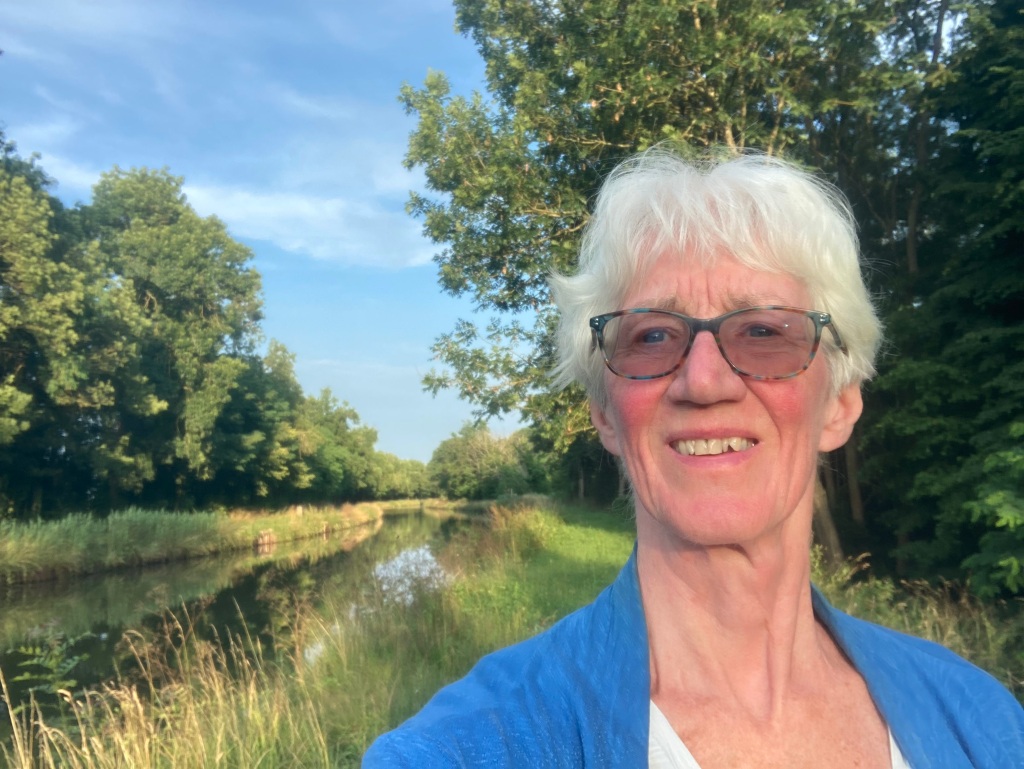
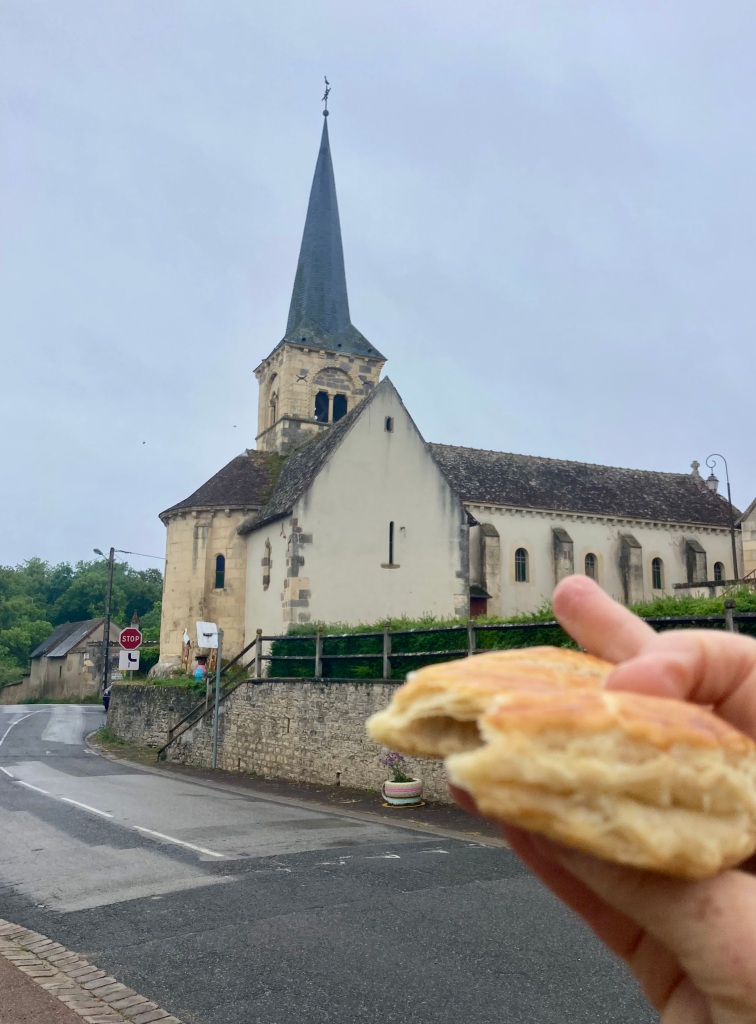
In the cool freshness of the next morning I walked the few hundred metres back into the village and its one shop, a boulangerie.
Naturally `I bought bread for lunch, but also a crispy chausson de pommes as a treat for my breakfast!
The last stop on our first half of this canal was Chevenon. Again it was not a long day’s cruise.
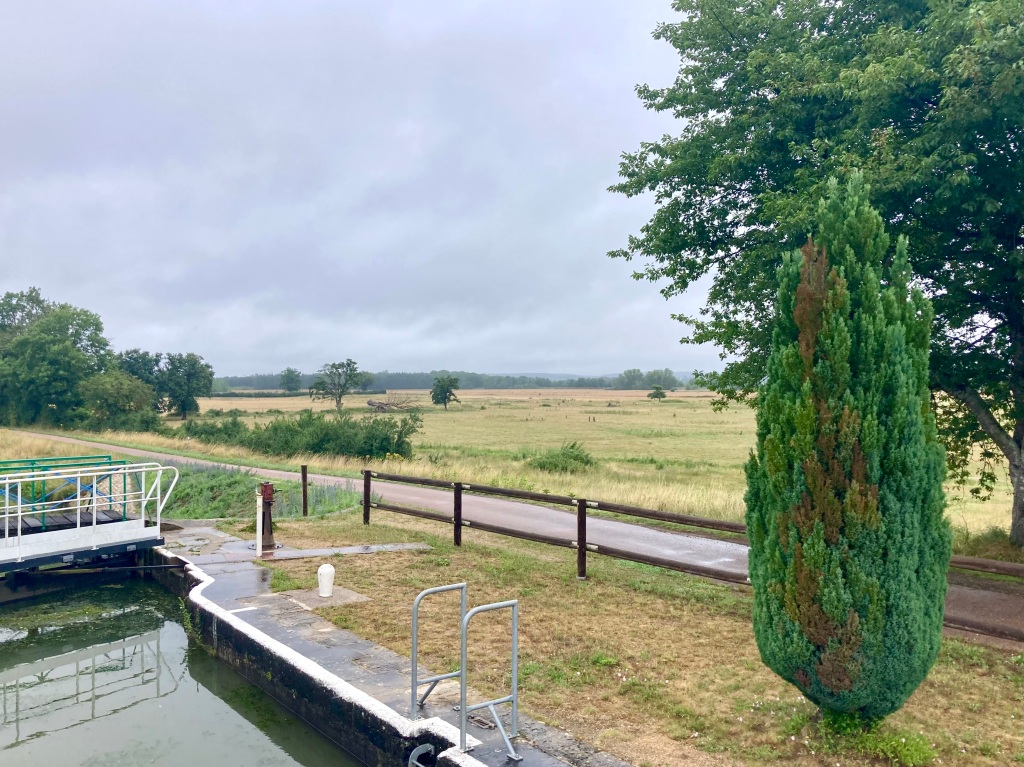
There was a slight change in landscape with large areas left untended, or maybe for grazing.
We seemed to be on a bit of a plateau with horizons a long way away across the huge Loire valley.

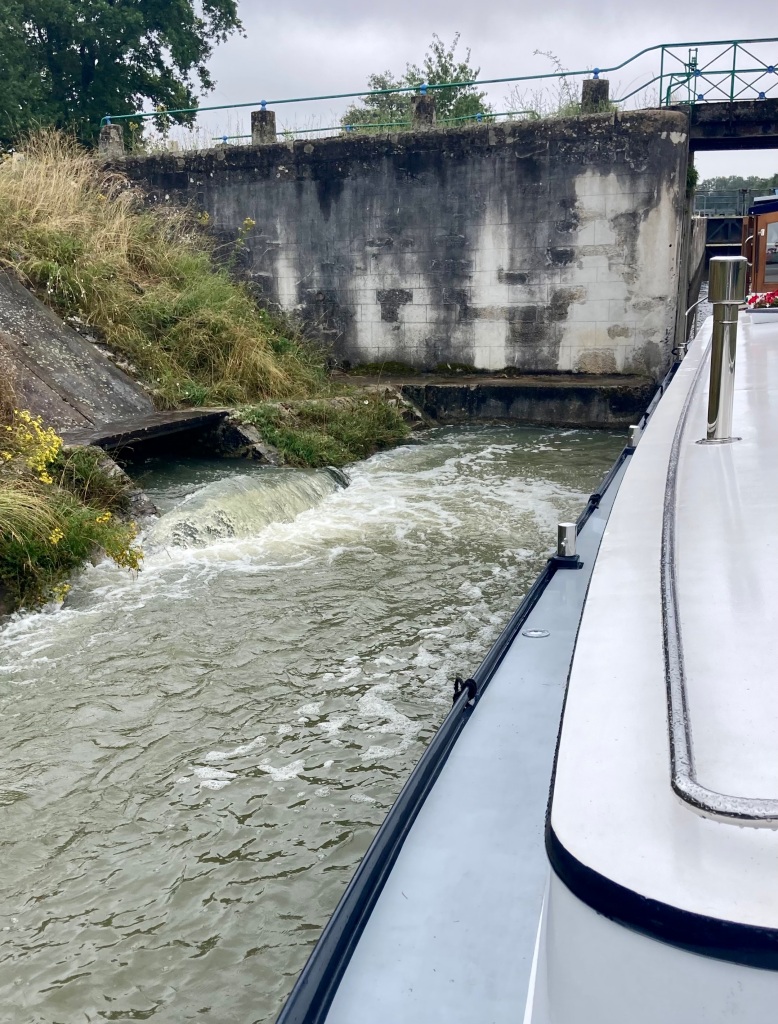
This time the slight difference in the lock was that the railings were panted blue and green – VNF colours, and we had a rushing overspill from the lock that whooshed out at us as we left. Sometimes these can push Calliope sideways, but the barge and her Captain had no trouble with this one.
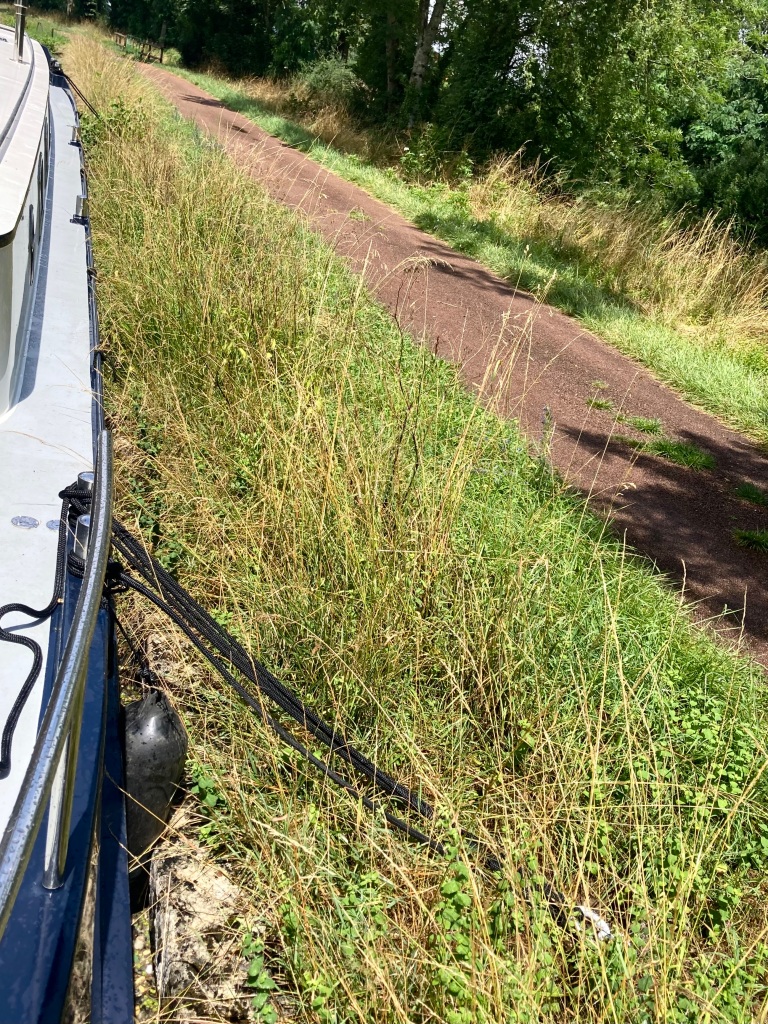
The Chevenon mooring was described in the Dutch Barge Association (DBA) Waterways Guide as having 3 rings almost completely covered in grass, so we were on our best lookout duties as we came to the area. As soon as one ring was spied I got myself ashore (not quite a jump yet) and began rooting about in the grass for more. In all we found 7, noticeably painted white!!
This was definitely another poeaeful rural mooring, far from roads and traffic noise. Yet the village of Chevron was close enough to walk round, and we had seen on the map that there was a chateau.

There definitely was a chateau! Maybe the bar and boulangerie of the village had closed in the past few months, but the medieval chateau still stood proud.
It was built between 1382 and 1406, probably for Guillaume I de Chevenon. After various families owned it through the centuries in 1940, a Mr. and Mrs. Bardin became the owners; lucky them.

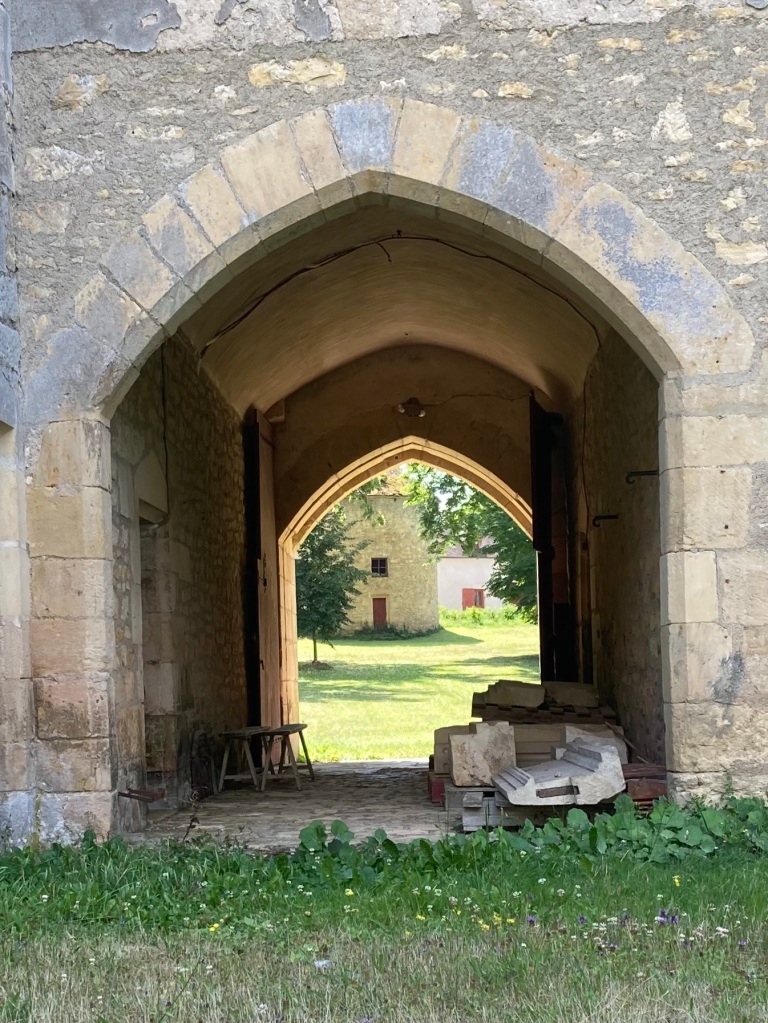
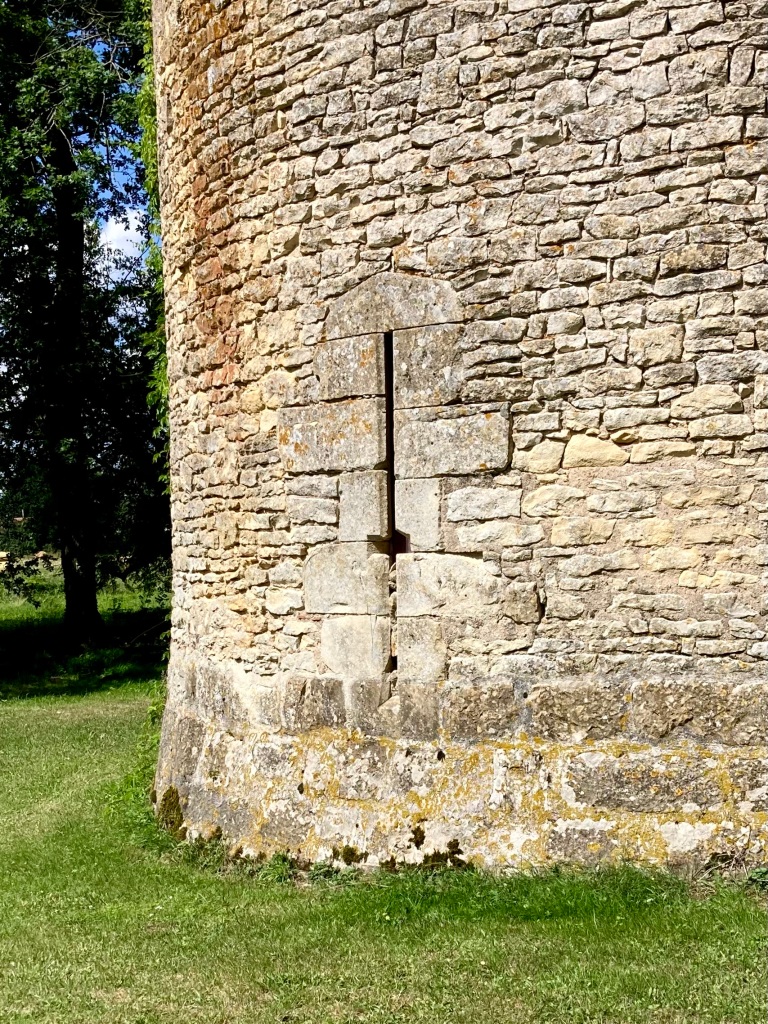
There was a row of statues at the end of an overgrown lawn, a clear view beneath the chateau where gates used to close, and arrow firing slits all over the place. I have looked for history of the chateau, but found nothing much so far apart from the above brief comments.
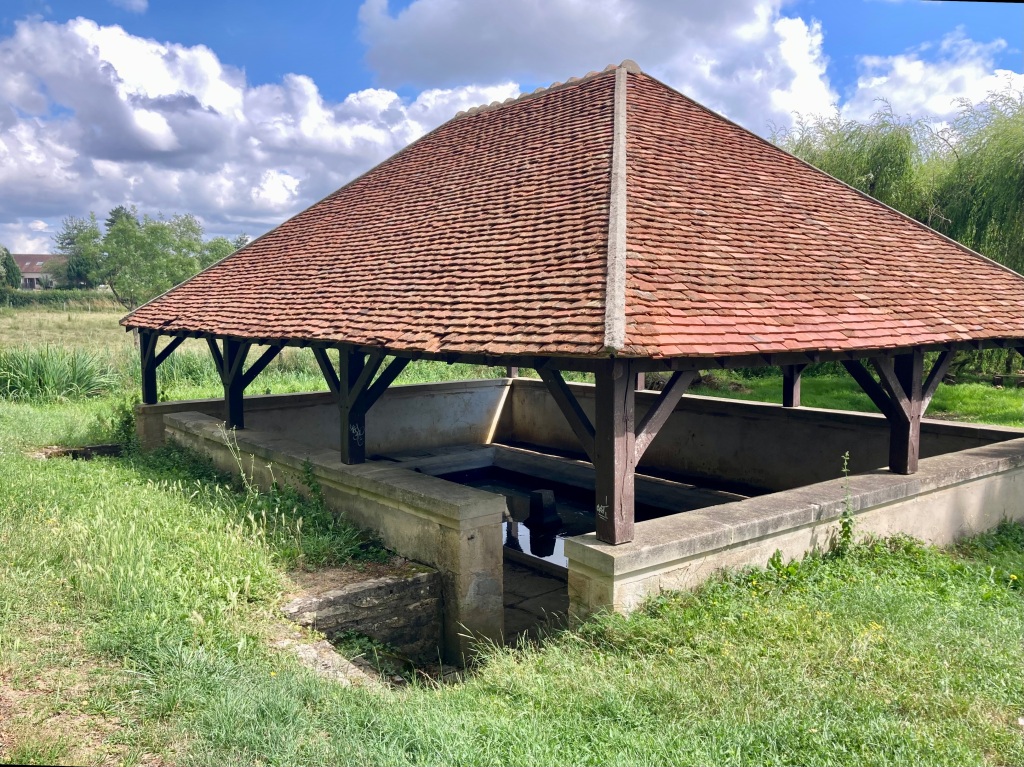
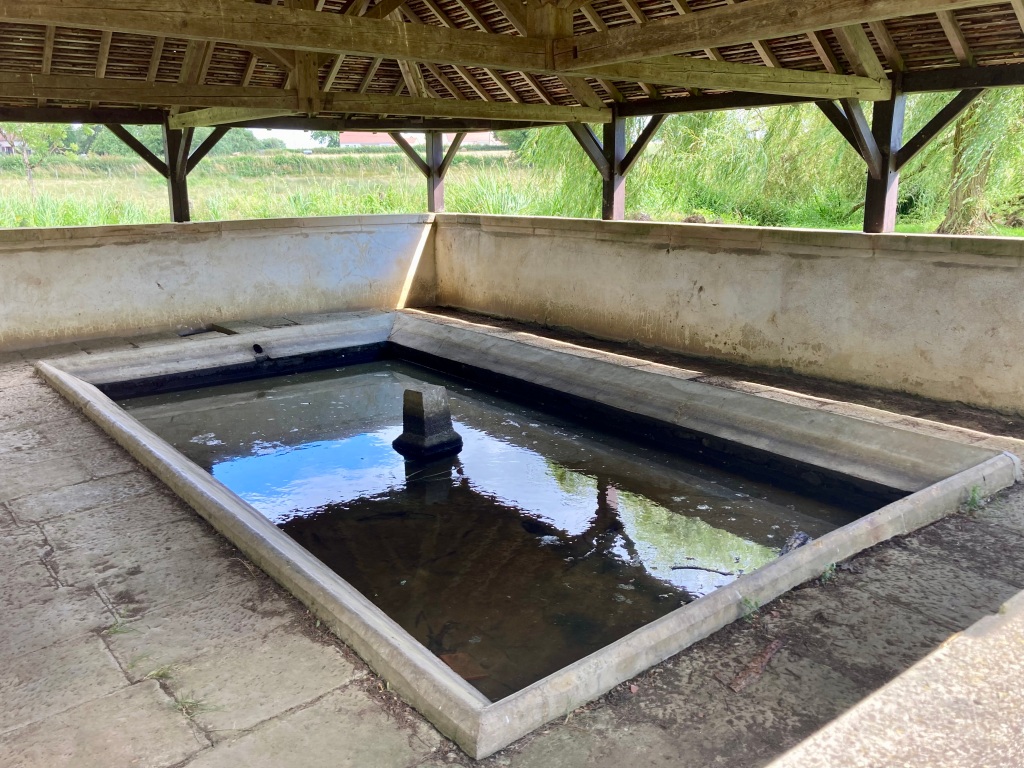
Opposite the entrance to the chateau grounds was quite a grand lavoir, where no doubt the servants of the Lords and Ladies of the castle had their fine linen washed.

Alongside the lavoir was an unbelievably picturesque countryside view; I had to share it with you. I particularly love the gate.

And this is where we will leave Calliope, moored up in the peace of a wild mooring, and after the first 93kms of the canals’ 200kms. The final 107kms will take her and us all the way to the famous Briare aqueduct – the next edition of the blog.

